
Brough motorcycles were described in period literature and advertising as the “Rolls Royce of Motorcycles.” Big, touring quality motorcycles with large, by British standards, V-twin engines and nice details like the nickel-plated fuel tanks and leather tool kits, Broughs were at the top of British two-wheeled designs. George Brough, pronounced “bruff,” personally certified every motorcycle built in his Nottingham, England factory. Brough was not an engine maker. British engine builder J. A. Prestwich, J.A.P., supplied the overhead valve engines. J.A.P. engines powered other brands of motorcycles and even some Morgan three-wheelers.
The 680 Black Alpine shared Brough “genes” with the larger SS100 and was made from 1926 to 1936. About 150 of all Brough models were made each year. Rarity is still a reason Broughs are sought after and command high prices. George Brough’s wealthy celebrity customers included T.E. Lawrence, a.k.a. Lawrence of Arabia and George Bernard Shaw, the composer.
Brough Superior built motorcycles, sidecars and a few cars from 1920 to 1940, even made aircraft parts shortly after the start of World War II. Brough’s machines were superbly styled and beautifully made and had performance to match.
The restoration of this Brough took a long time due to scarcity of parts, a generally complicated design and difficulty in finding experts on items such as the rare speedometer. The work was started by Dave Smith Classic Motorcycles, Plainfield, Illinois. More recently the restoration was completed by John Young Classic Auto Restoration, Lake Barrington, Illinois who has ridden the machine a good number of miles, tested the charging system and the electric Klaxon horn. Owner Don Rosene of Anchorage, Alaska adds to his long list of motorcycles on loan to the National Motorcycle Museum with this fine 1930 Brough Superior 680 Black Alpine.
When you visit the National Motorcycle Museum you can look at several Broughs including this 680 Black Alpine, SS100’s and even a SS100 Pendine competition model and compare them to several Vincents, the other premium British motorcycle brand.
Specifications:
-
- Engine: 50 Degree OHV V-Twin
- Bore & Stroke: 70mm x 88mm
- Displacement: 680cc’s
- Carburetion: Single Remote Float, Amal
- Ignition: Magneto
- Electrics: Battery/ Mag-Dyno, Unique Dual Headlights
- Primary Drive: Chain
- Clutch: Hand Clutch w/ Single Spring
- Gearbox: 3-Speed Sturmey-Archer
- Hand Shift with Shift Gate
- Enfield Rear Hub, Rubber Drive Cushion
- Starting: Kick Only
- Front Suspension: Castle Girder Fork, Friction Damper
- Rear Suspension: Monoshock Style, Friction Damper
- Wheels: 3.25 x 19 / 3.50 x 19
- Brakes: Drum, Front & Rear
Leave a Reply
Want to join the discussion?Feel free to contribute!
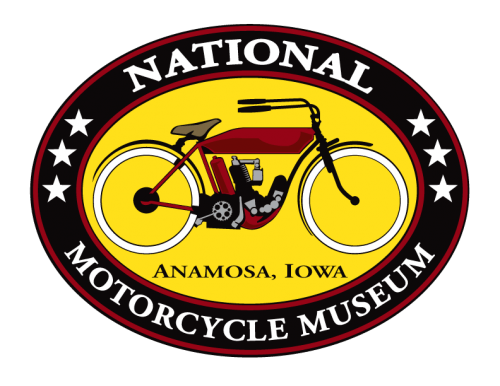
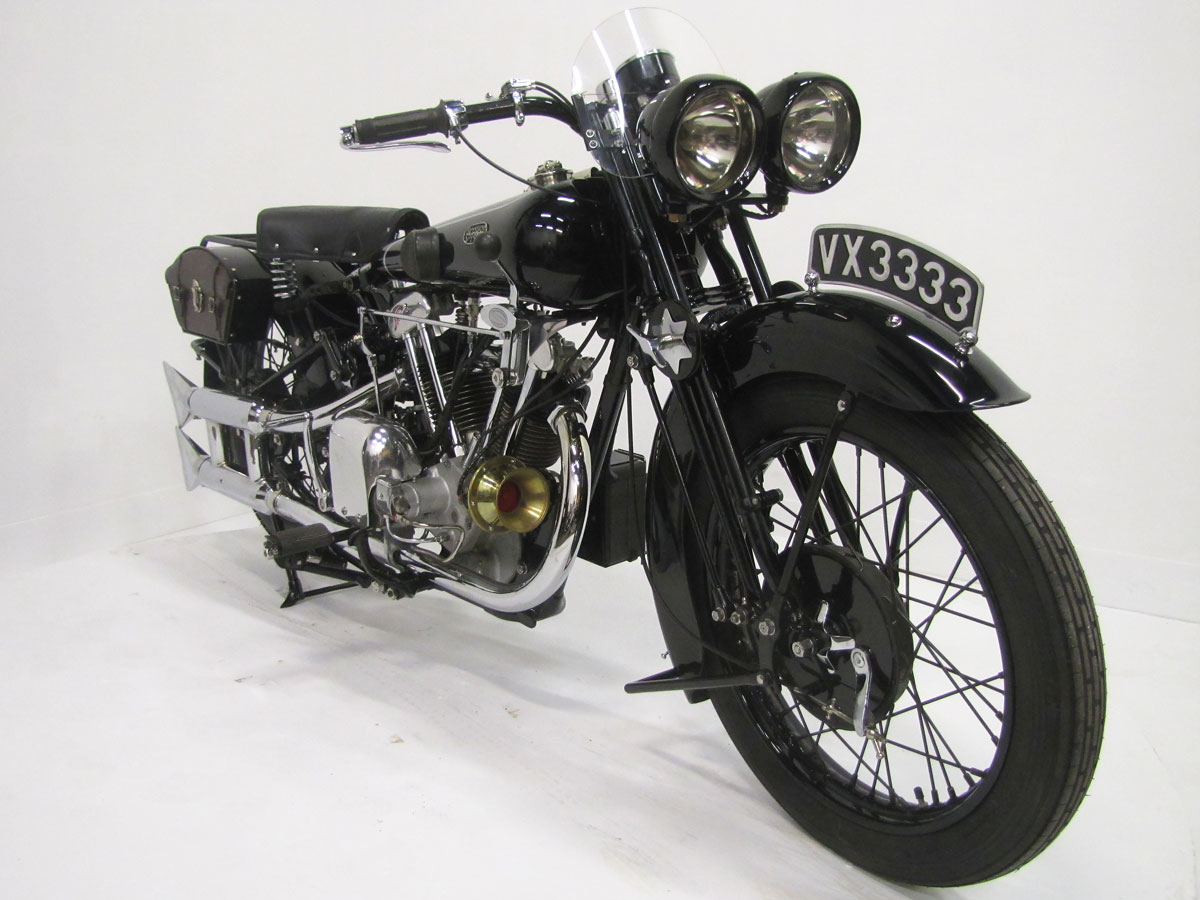
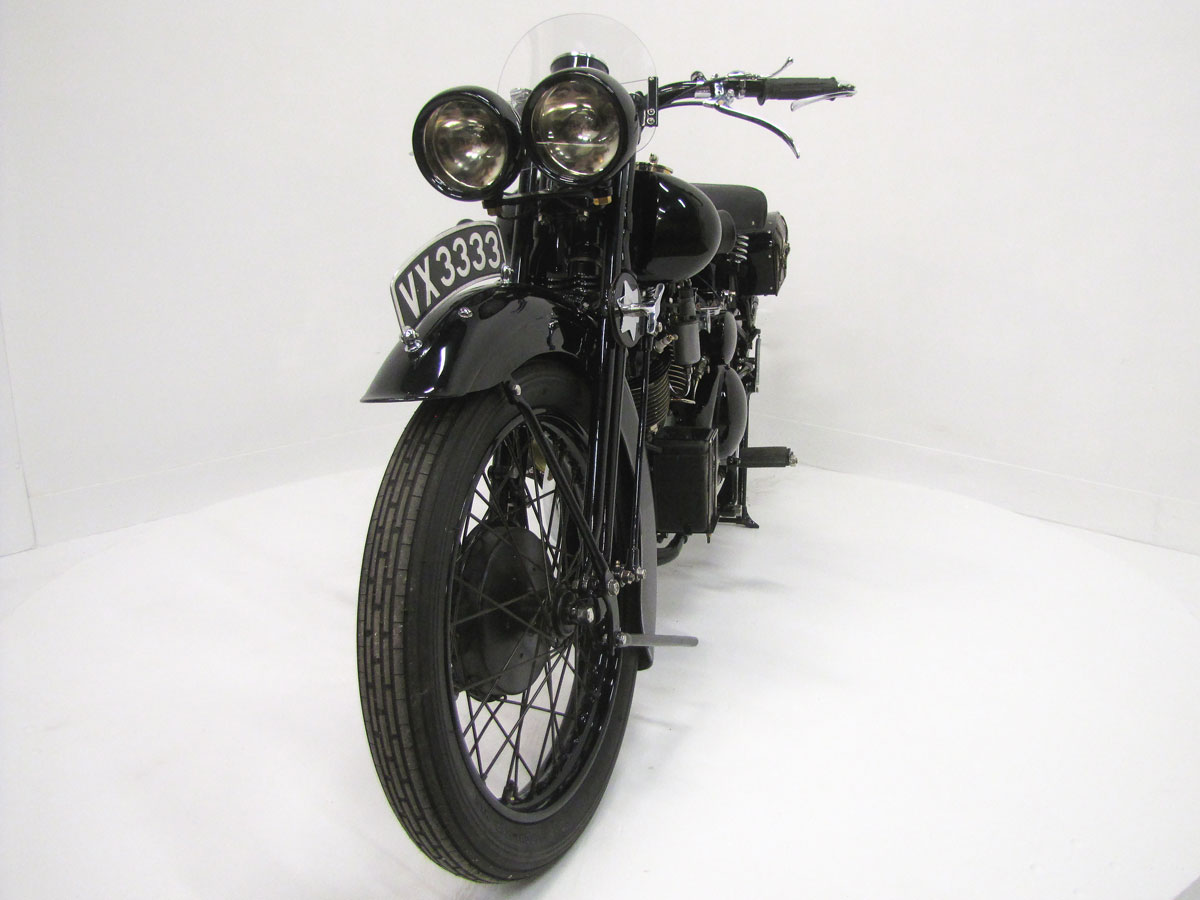
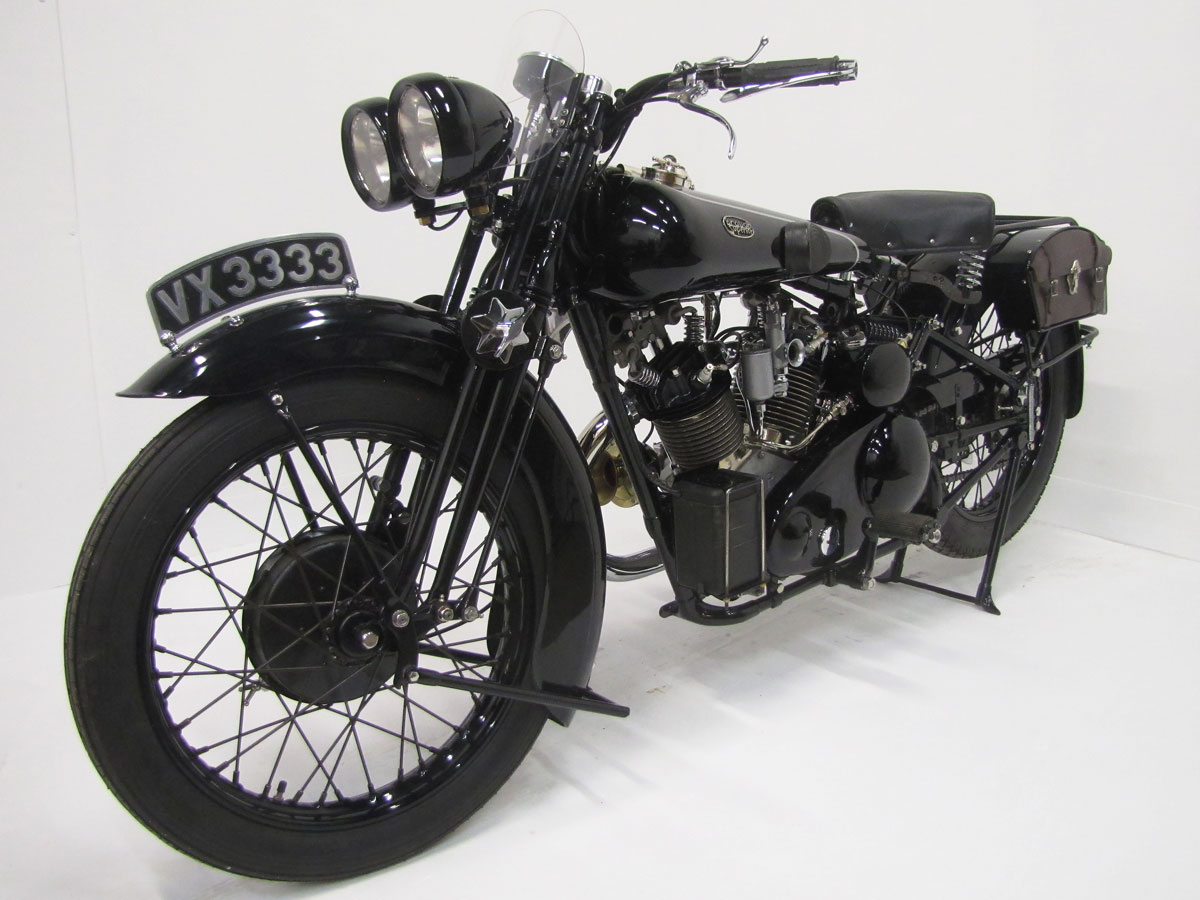
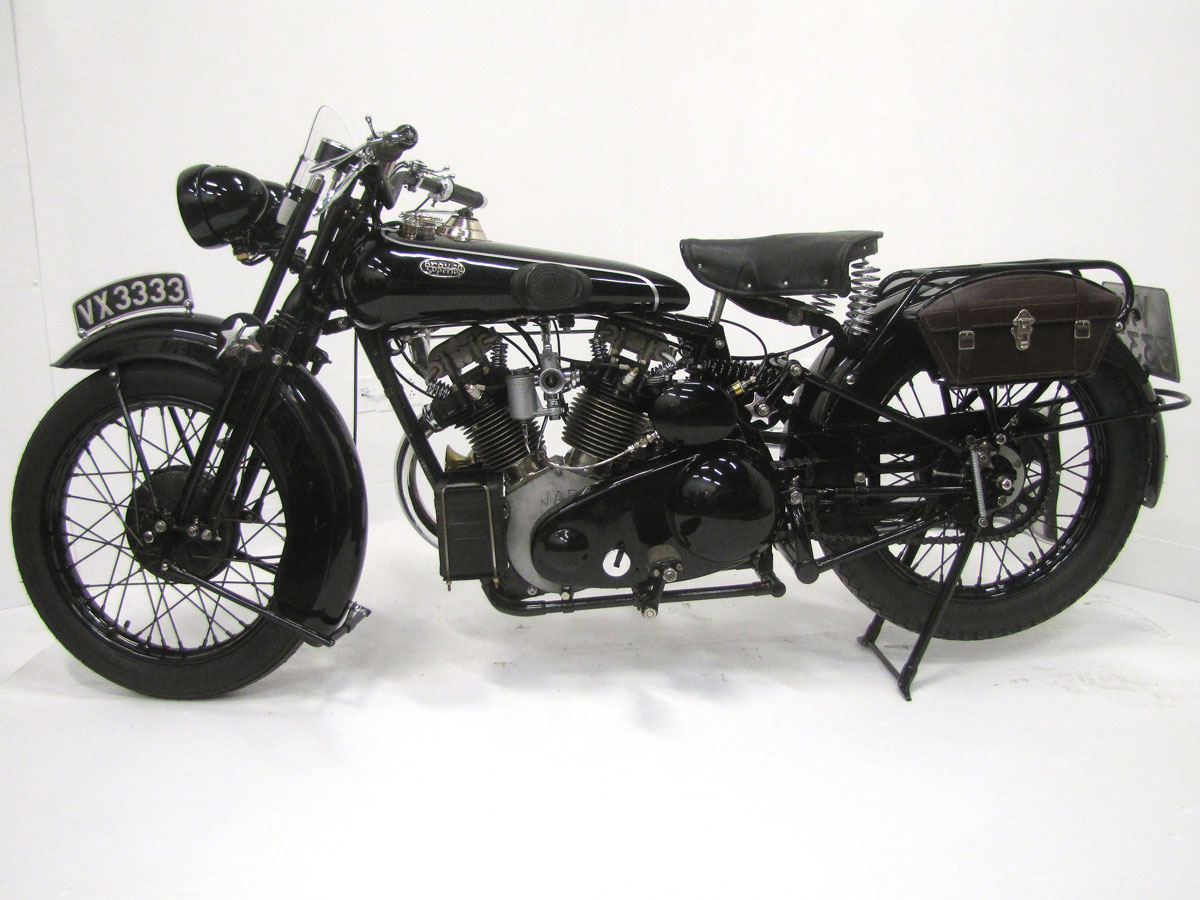
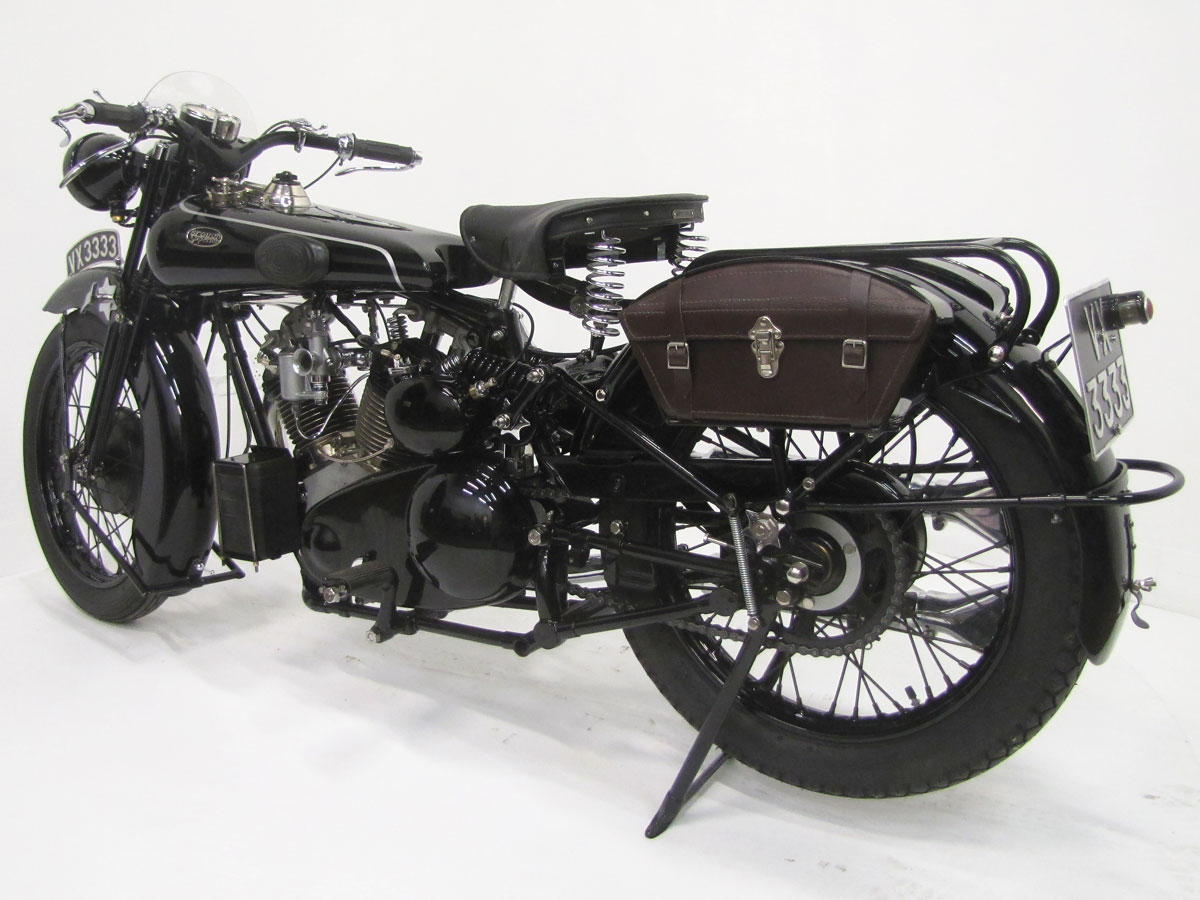
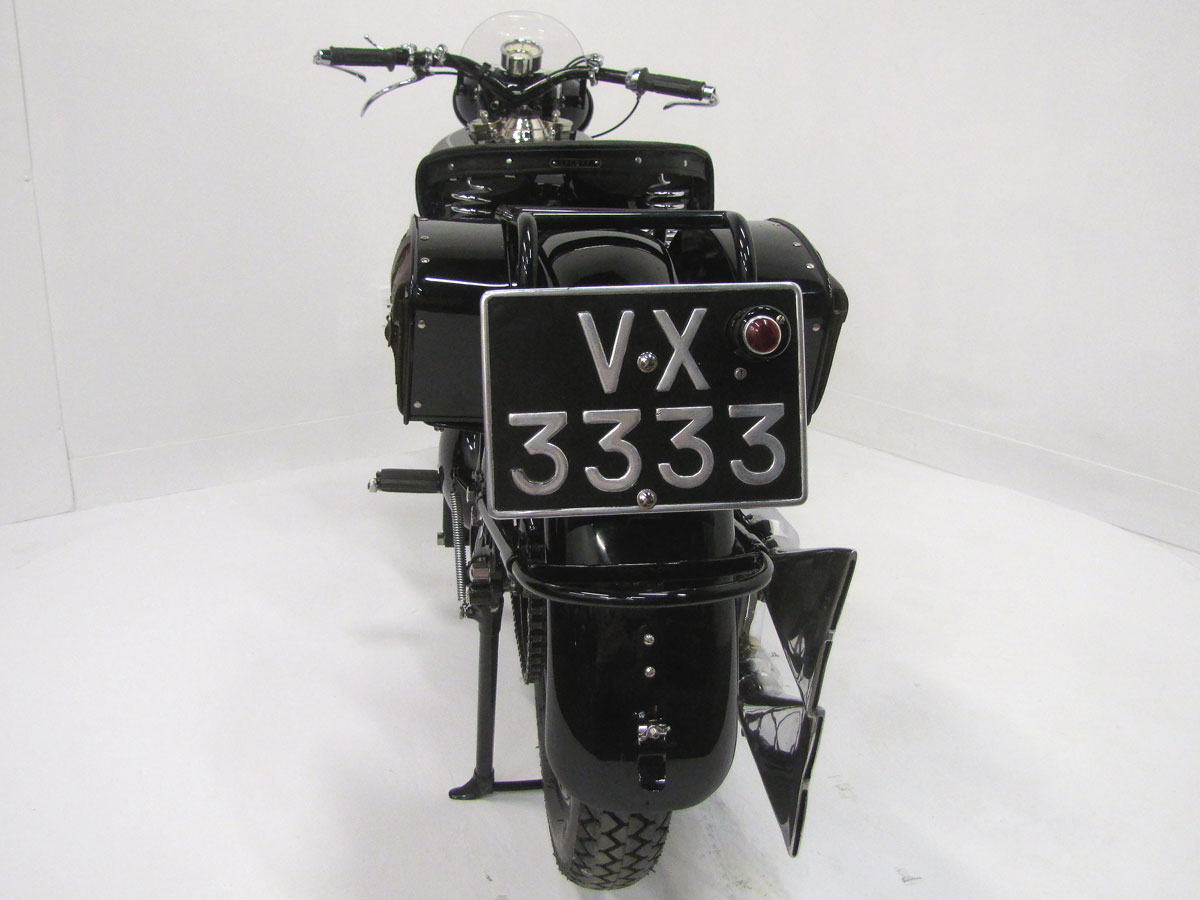
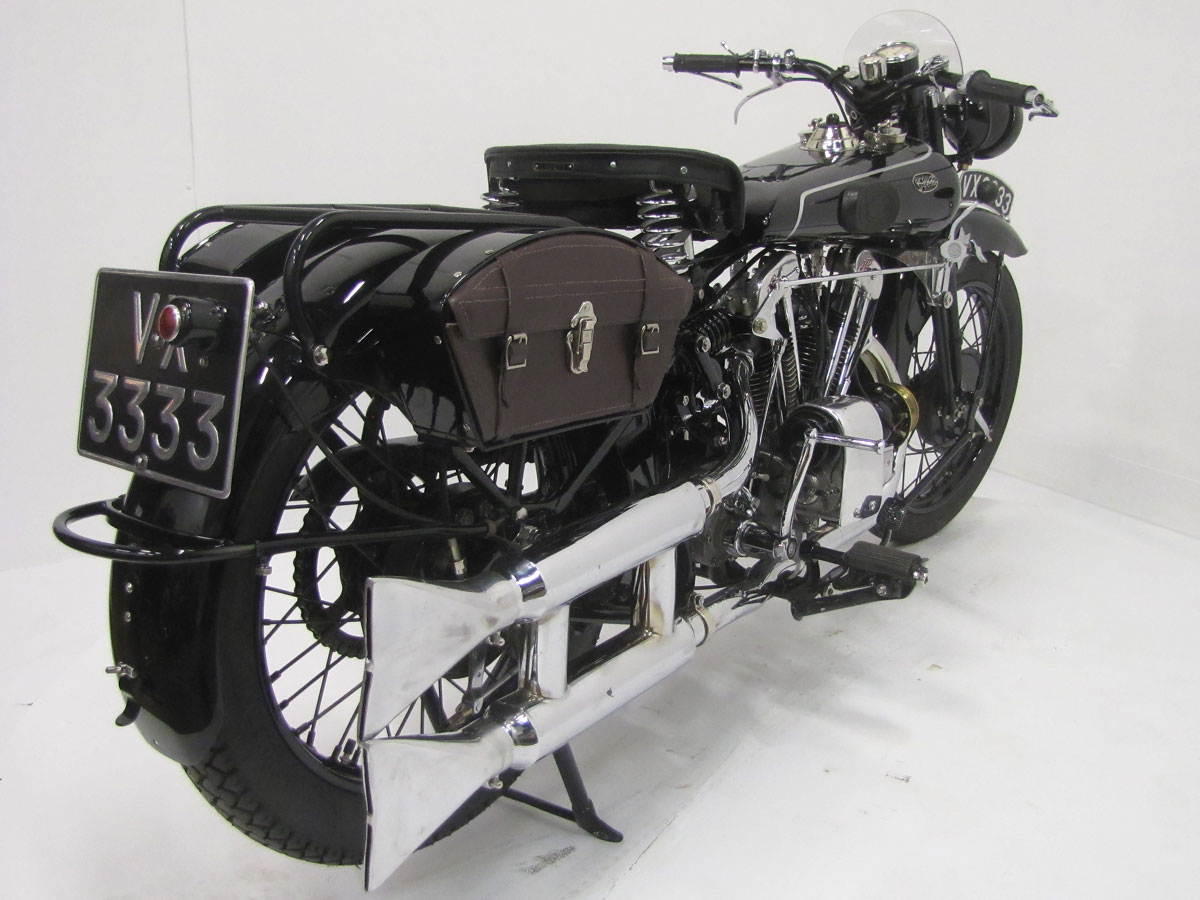
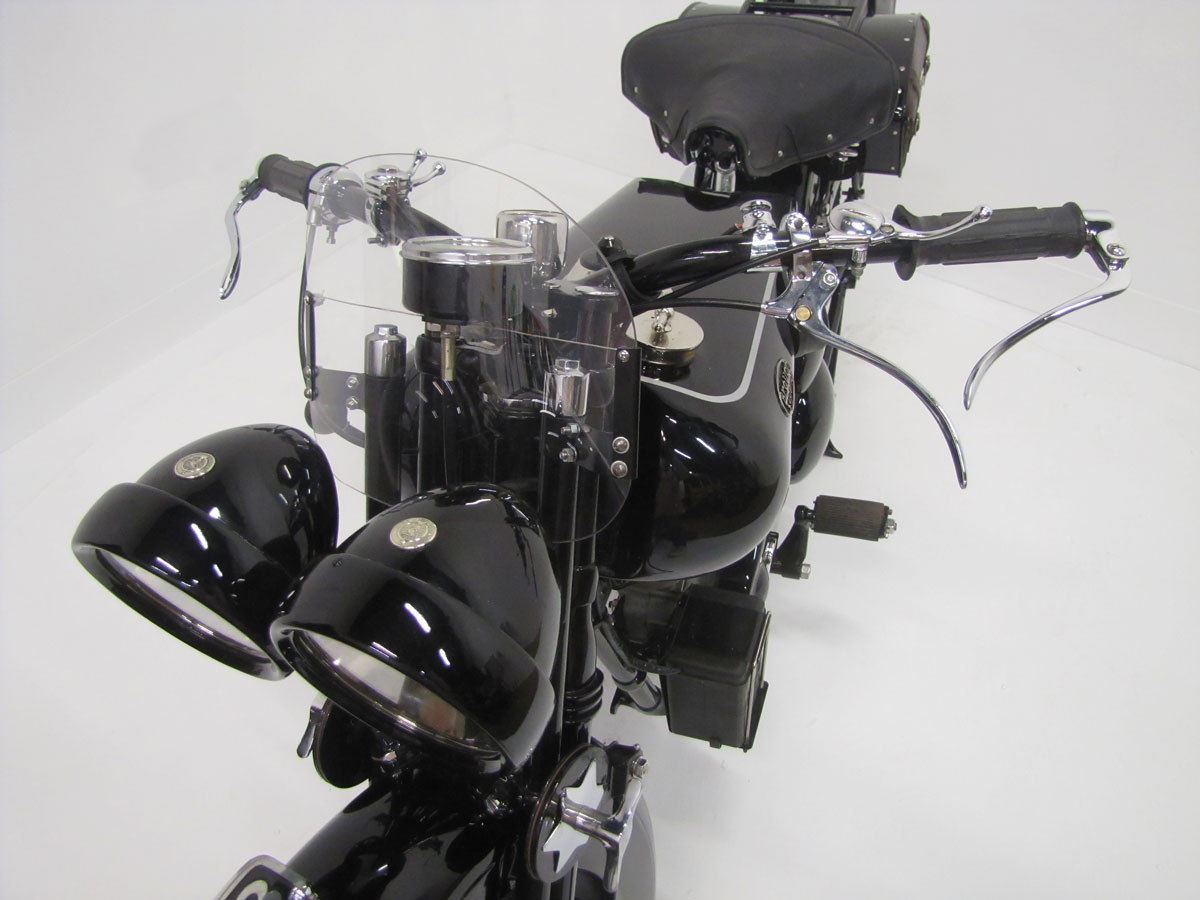
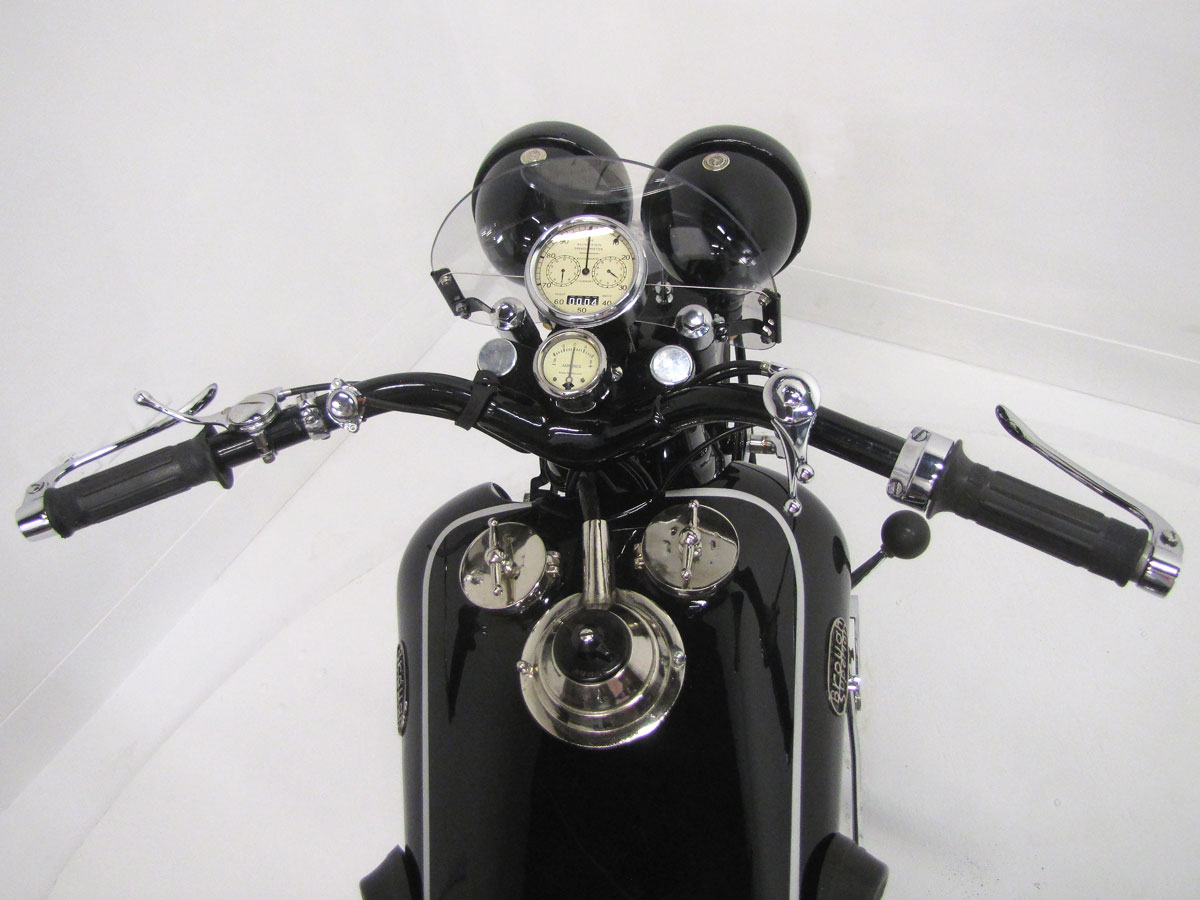
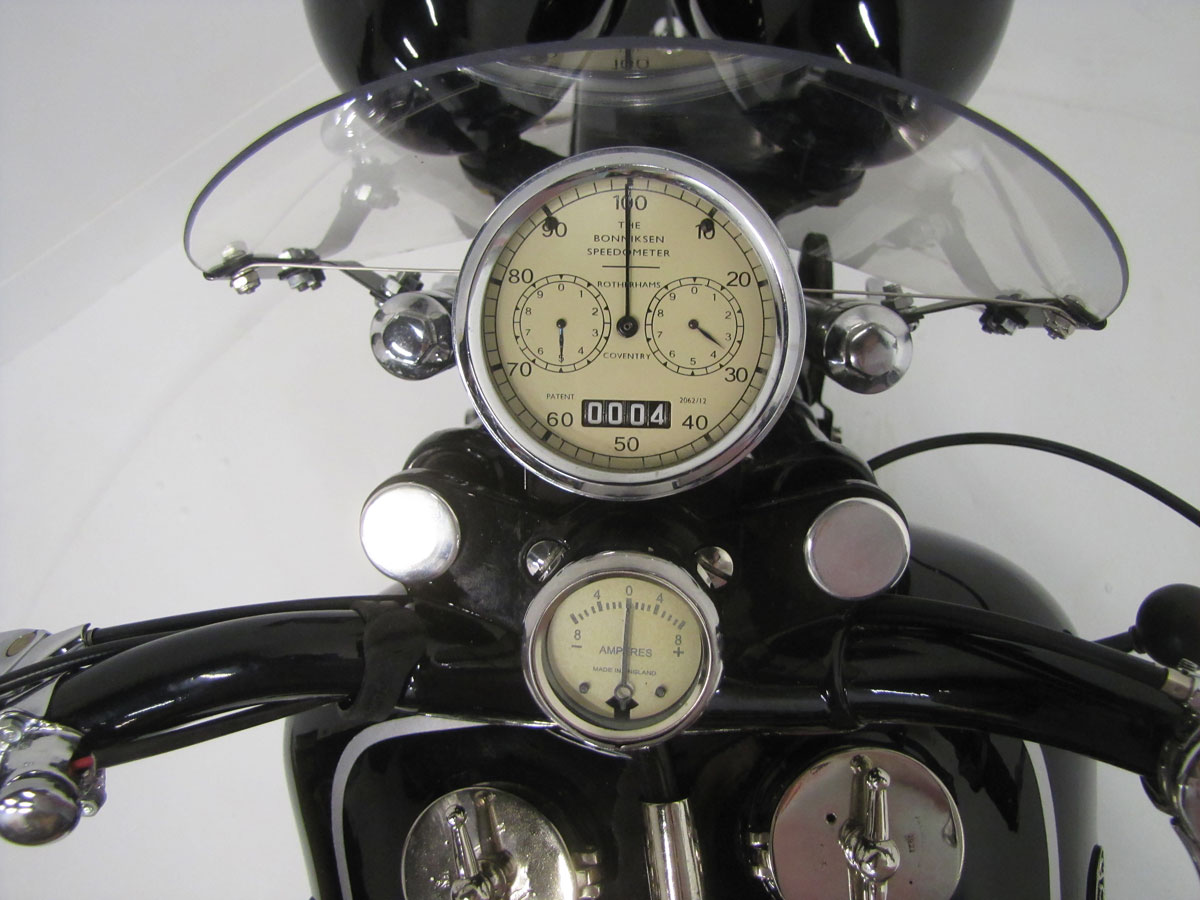
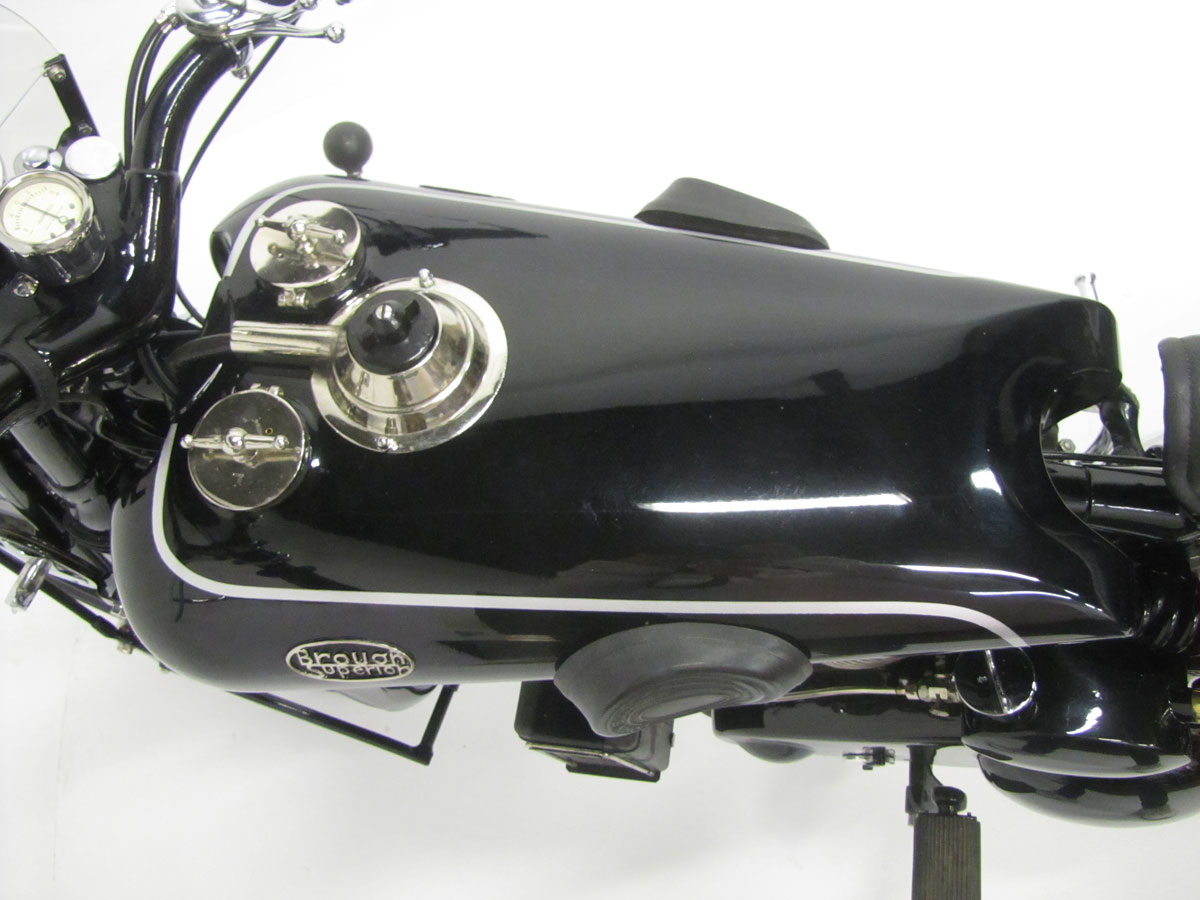
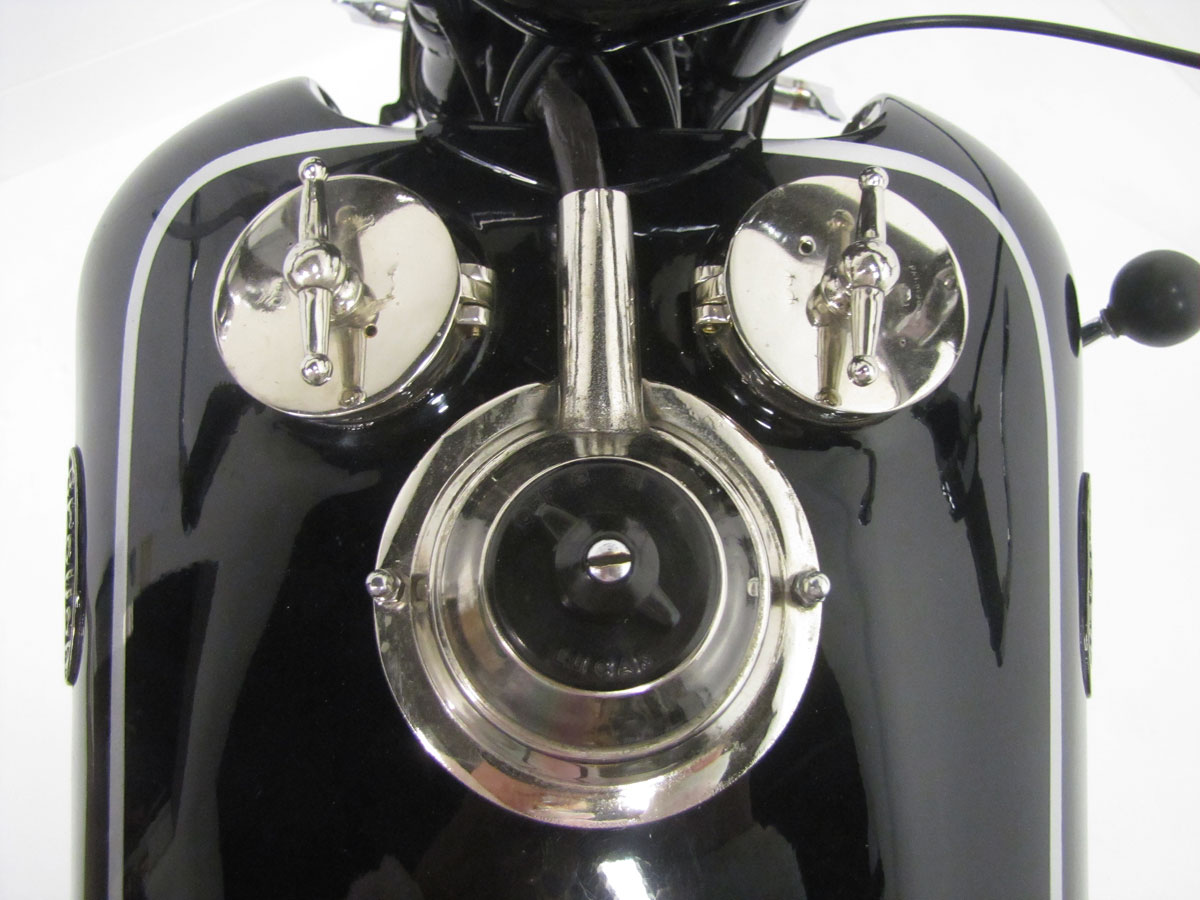
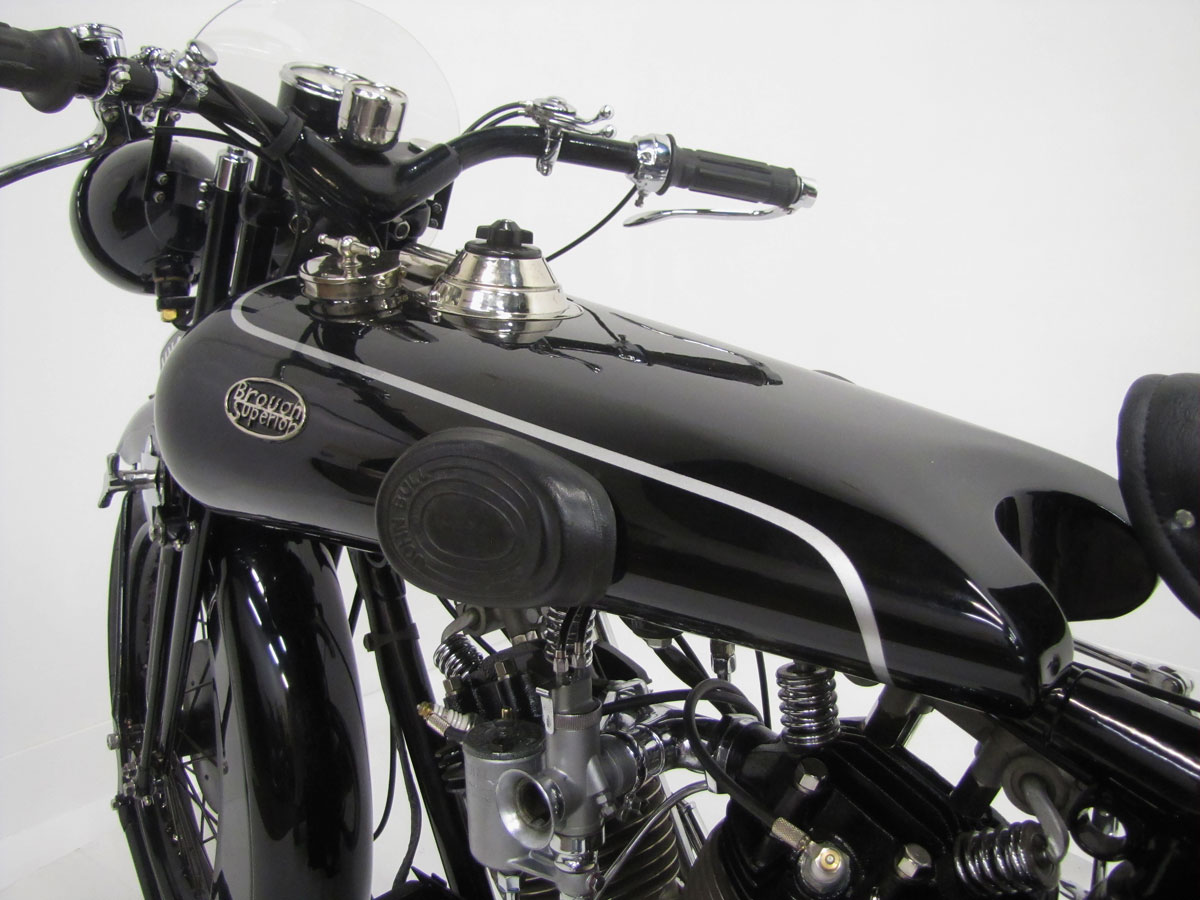
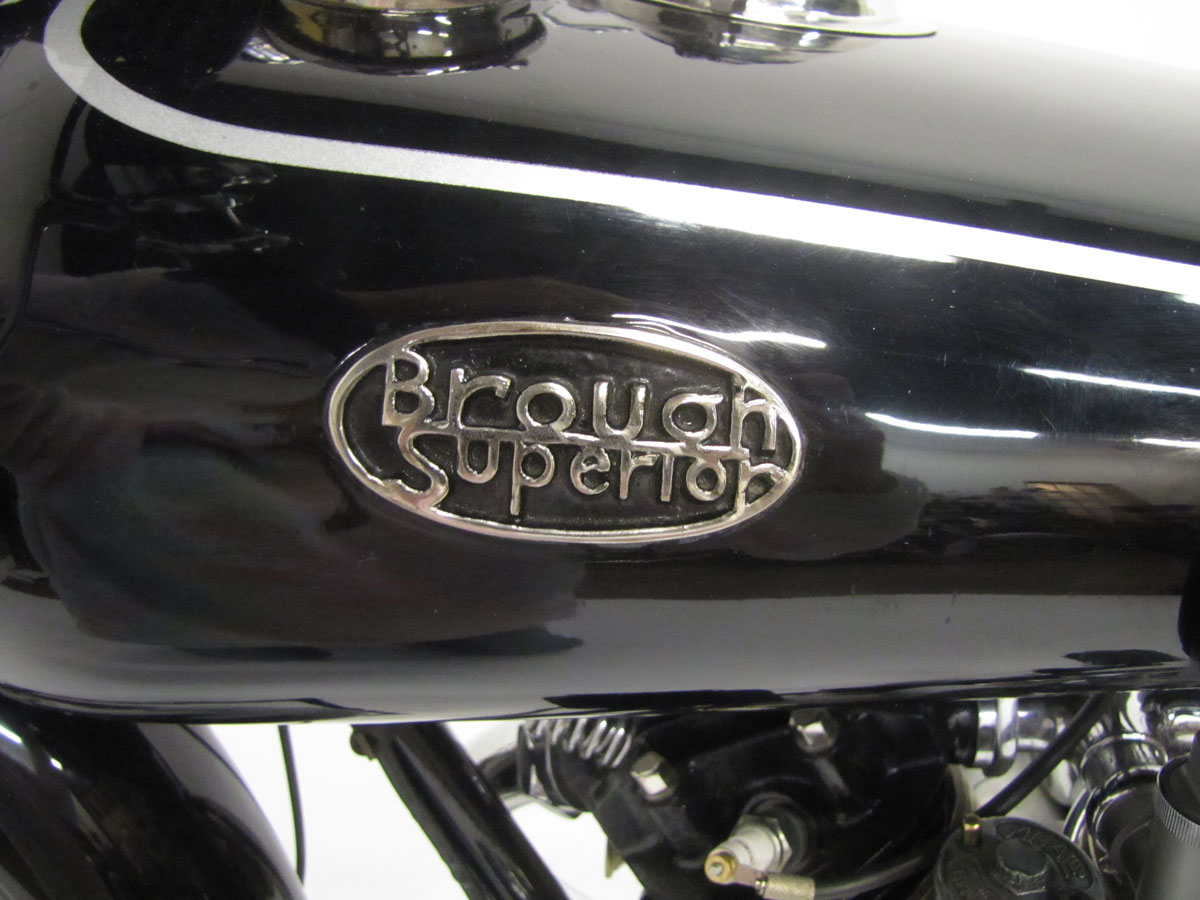
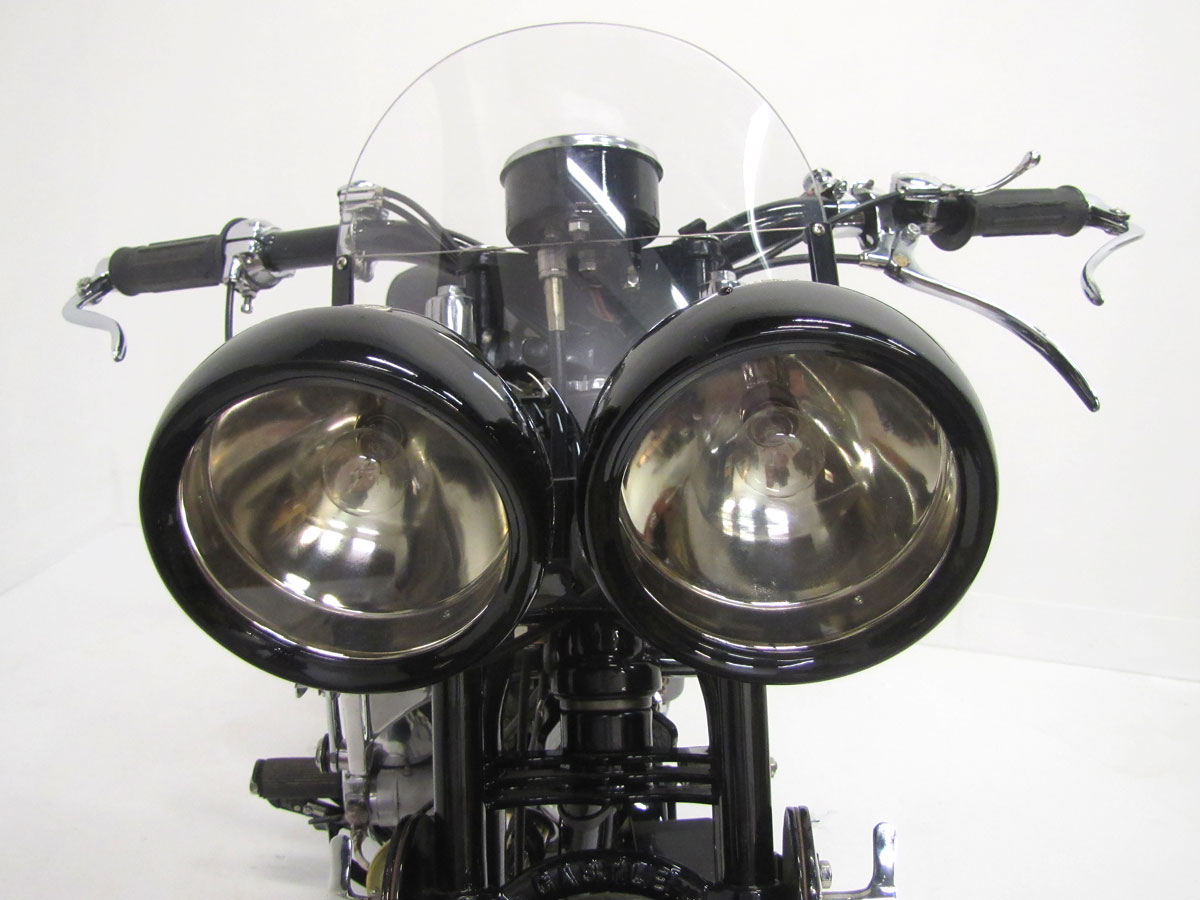
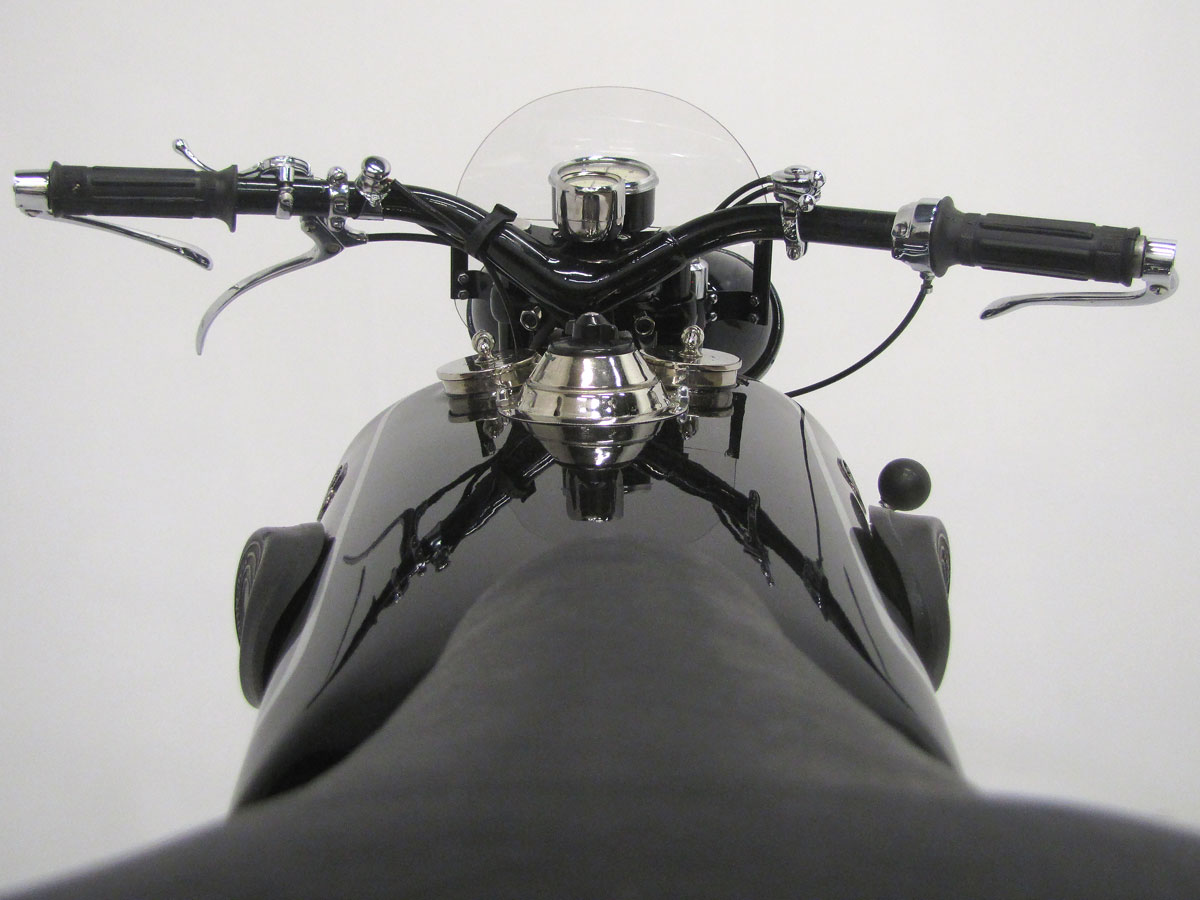
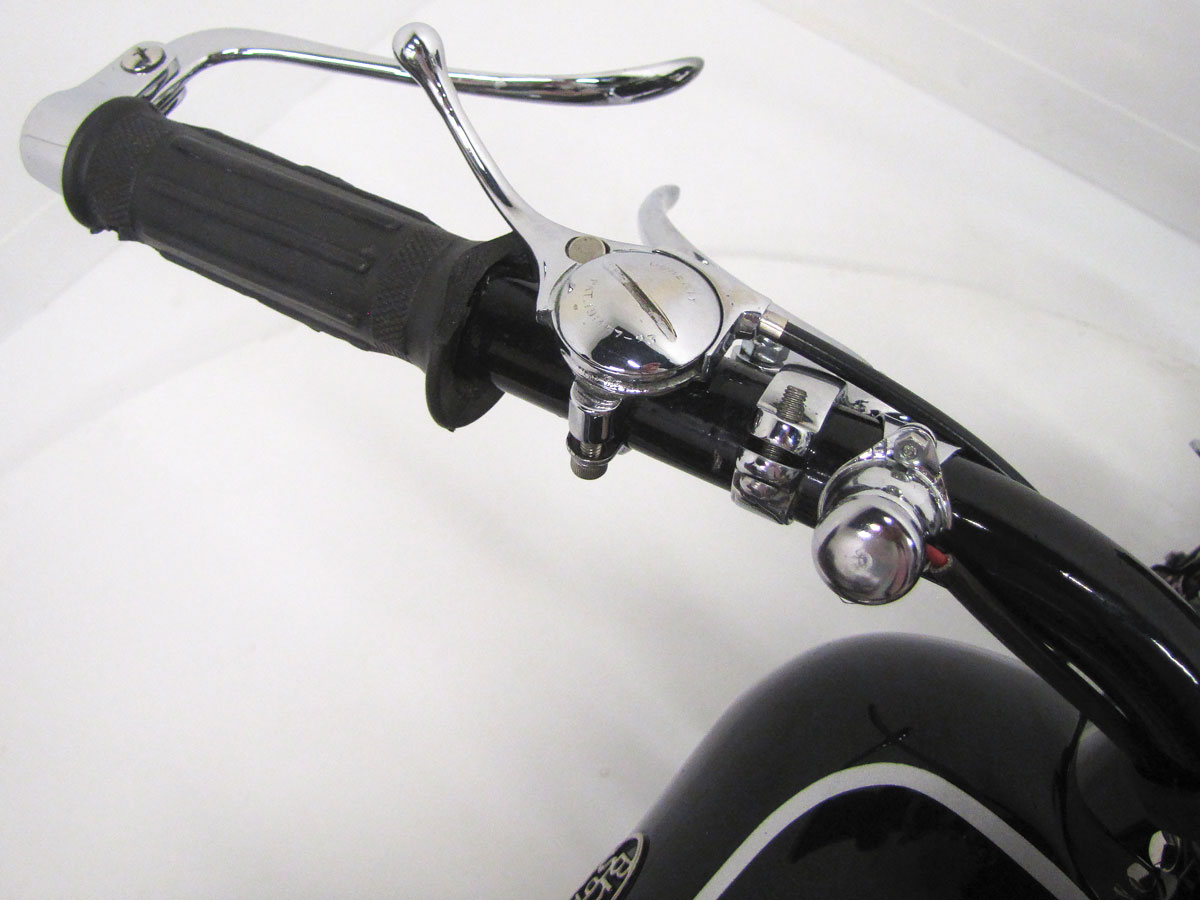
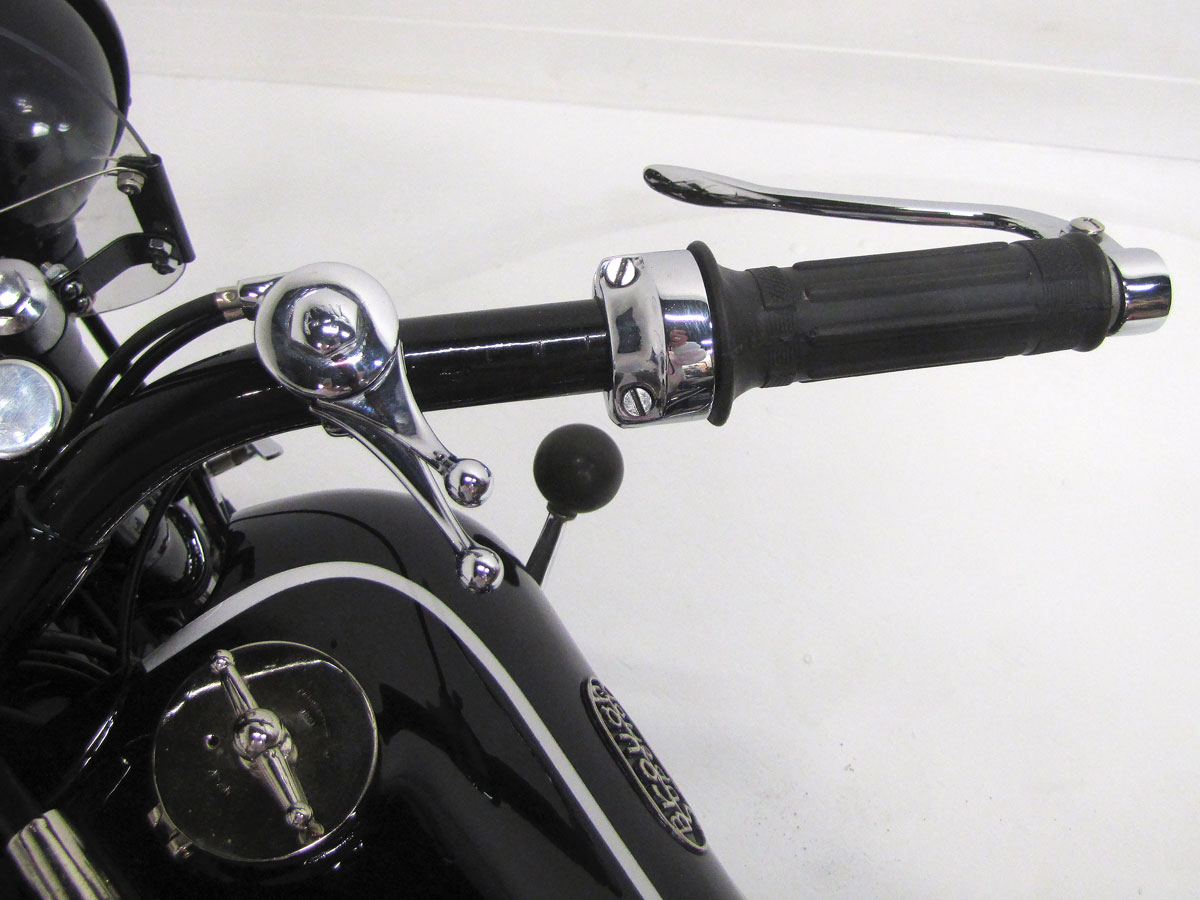
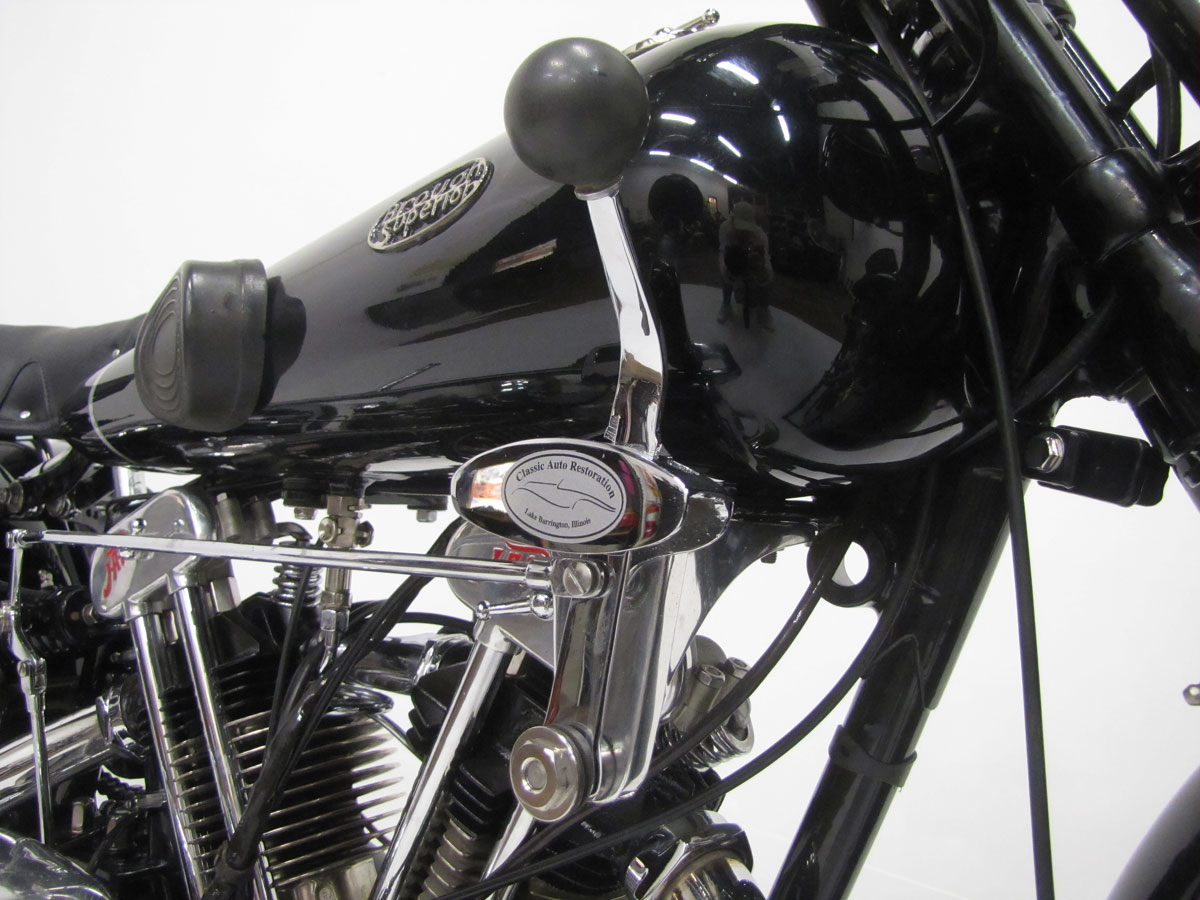
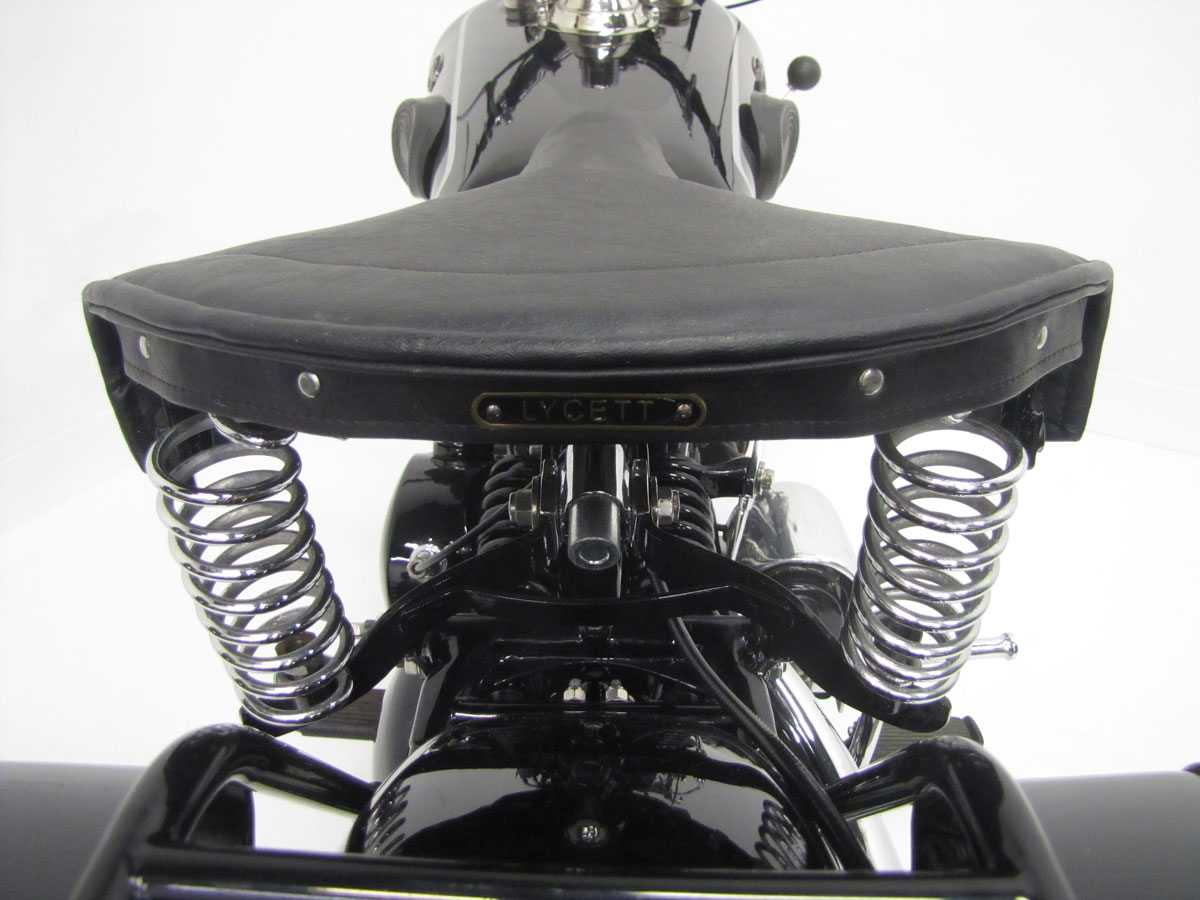
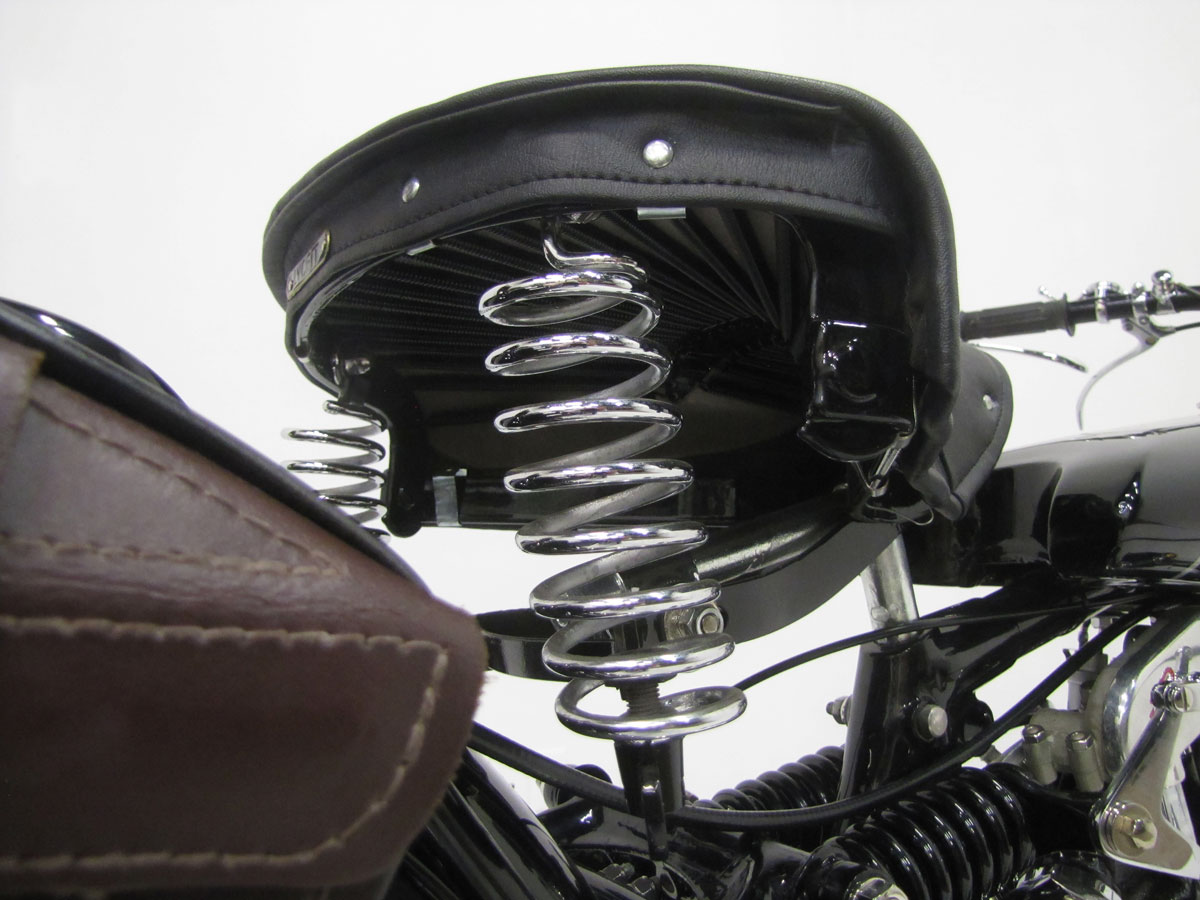
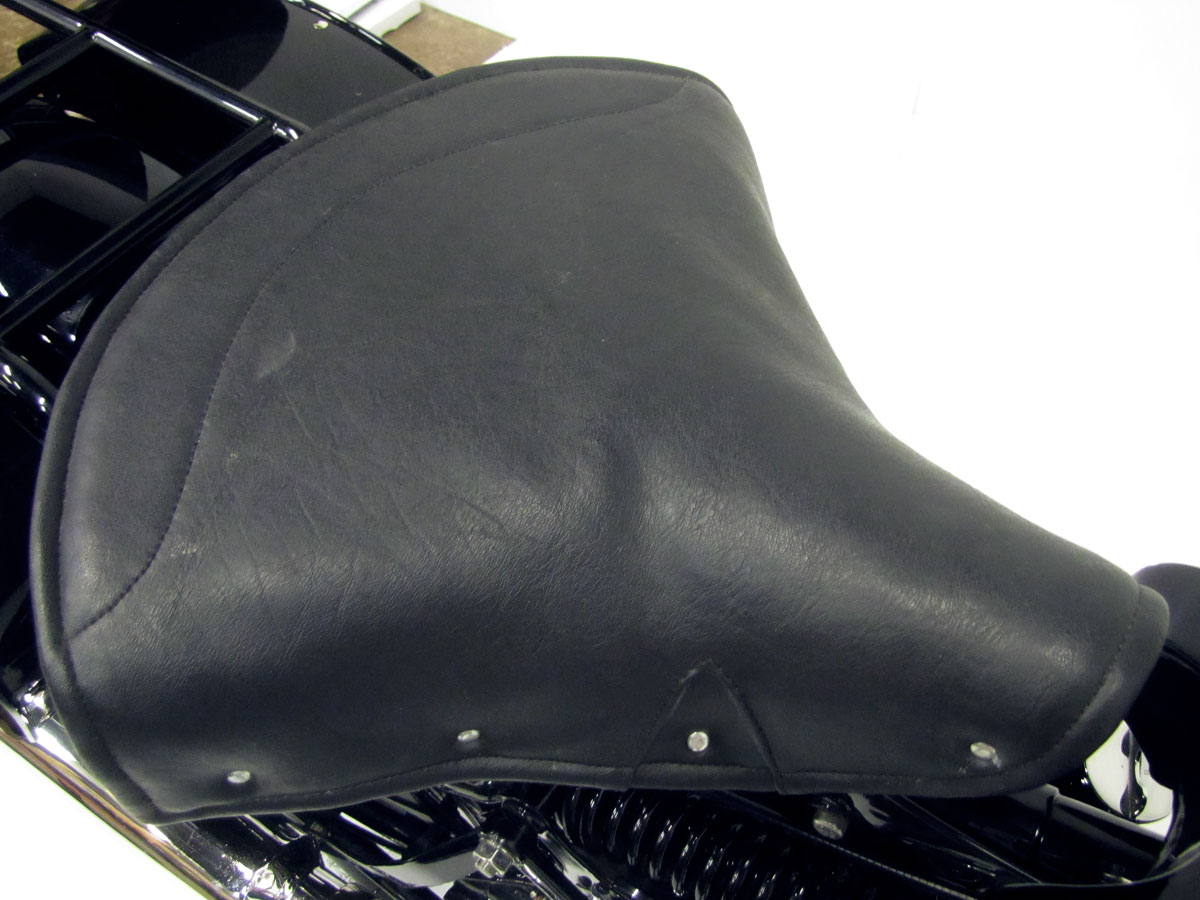
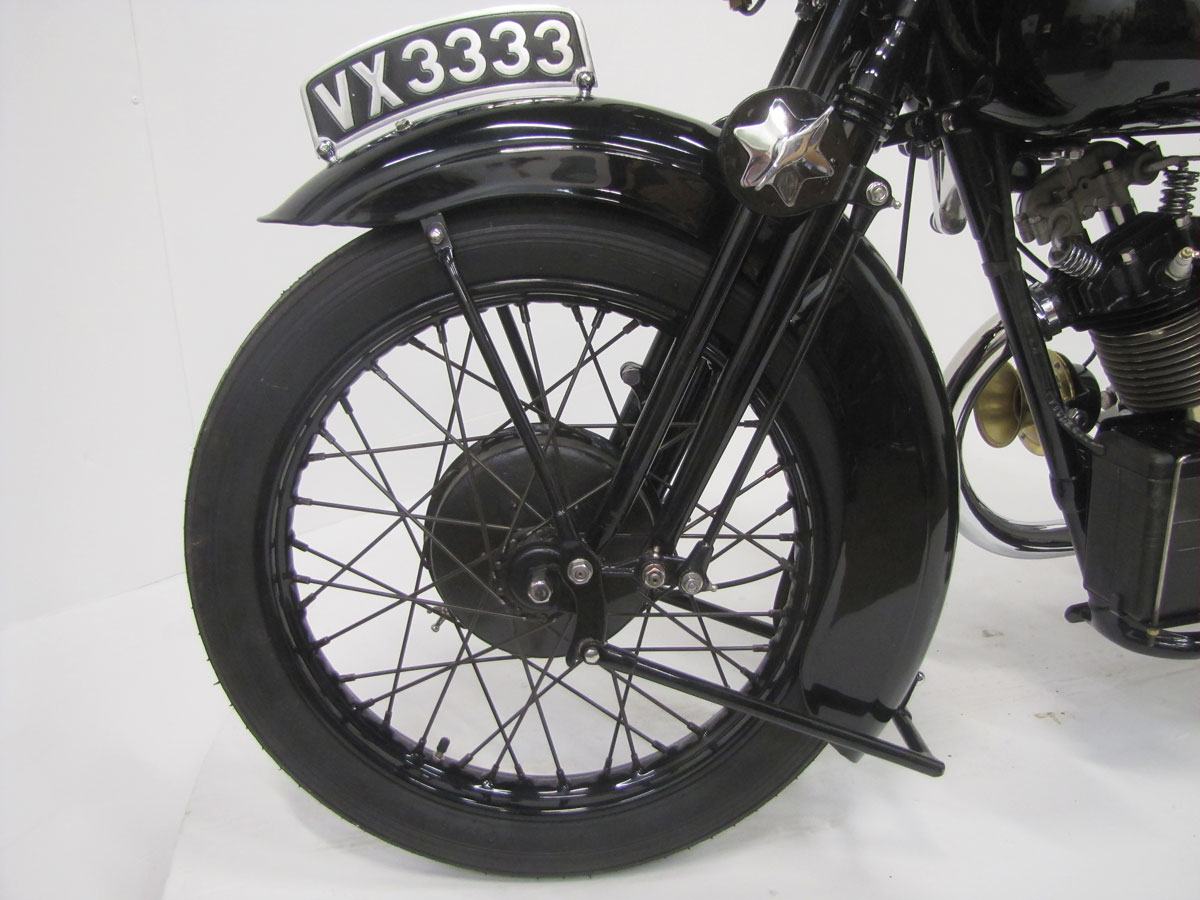
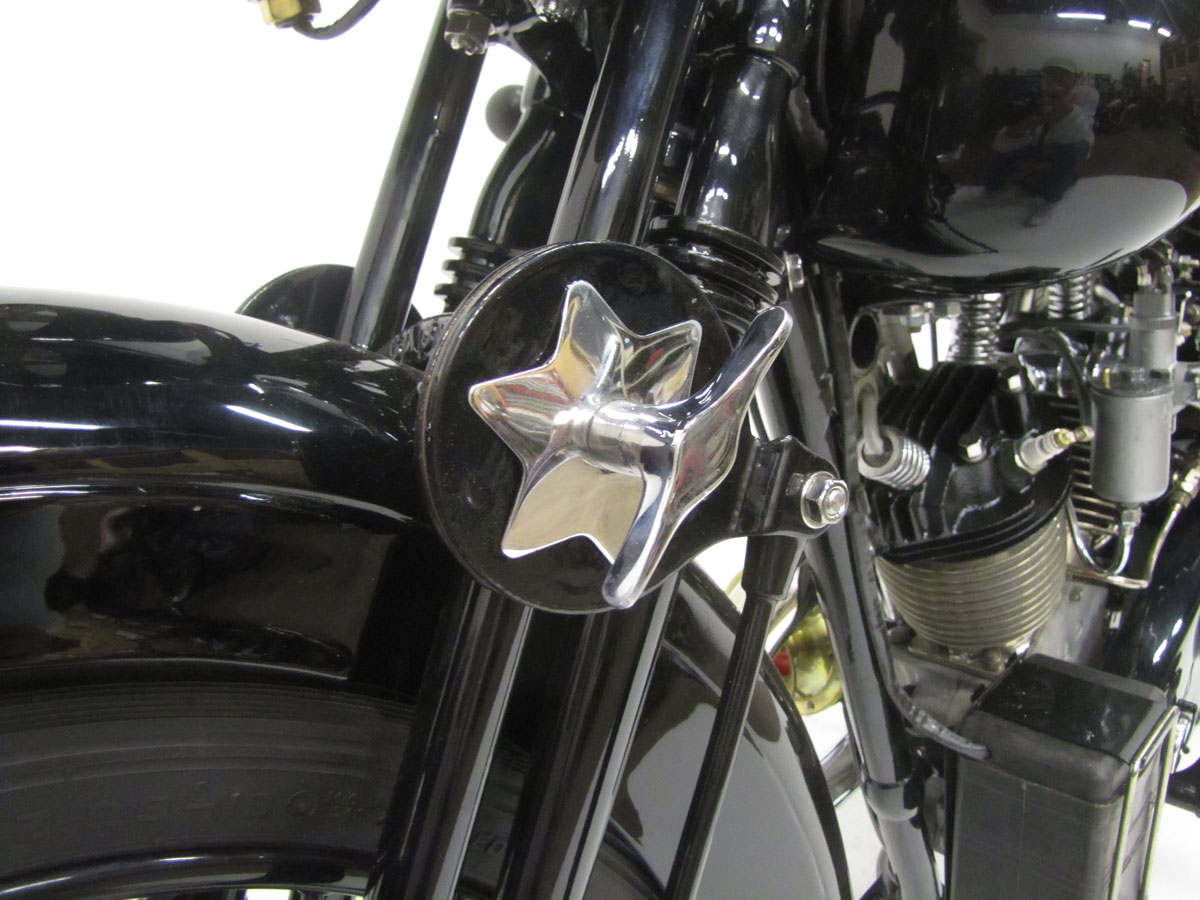
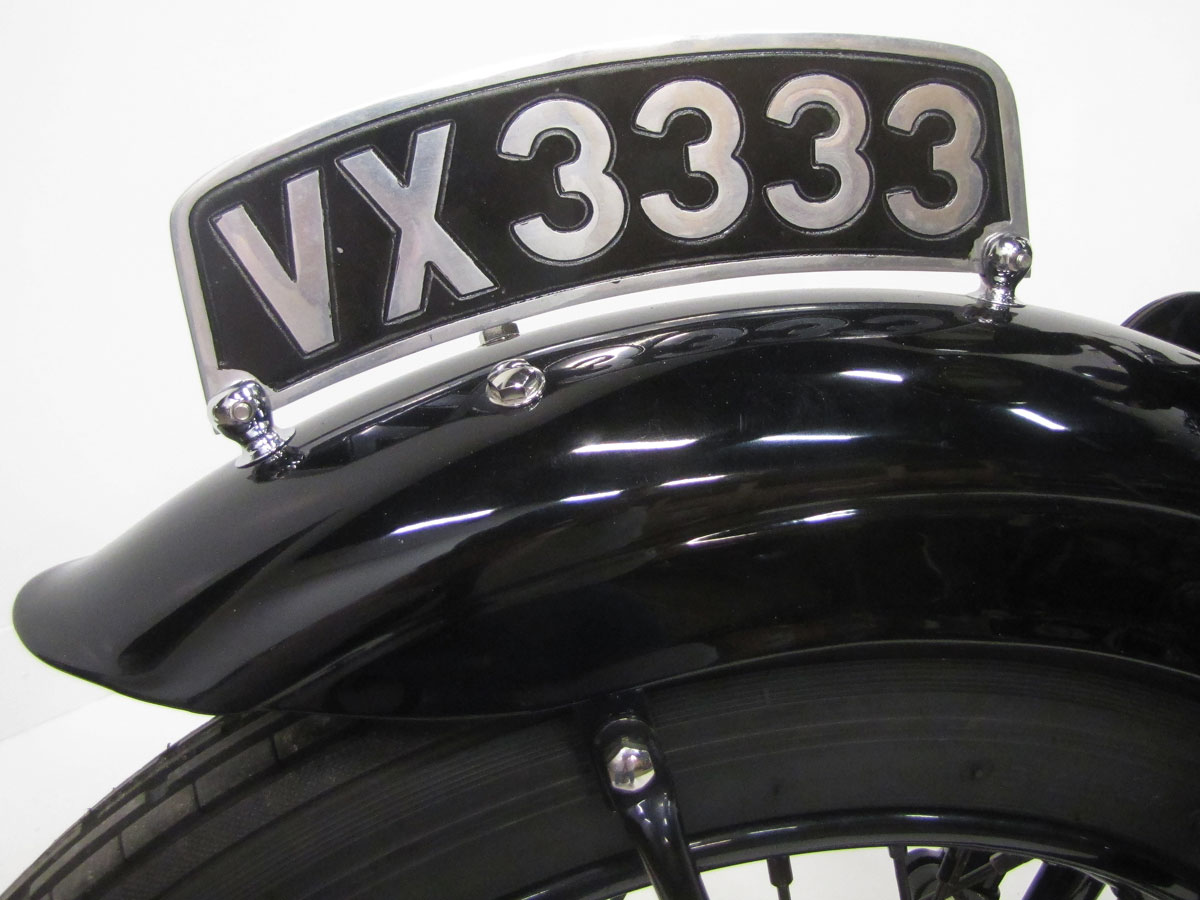
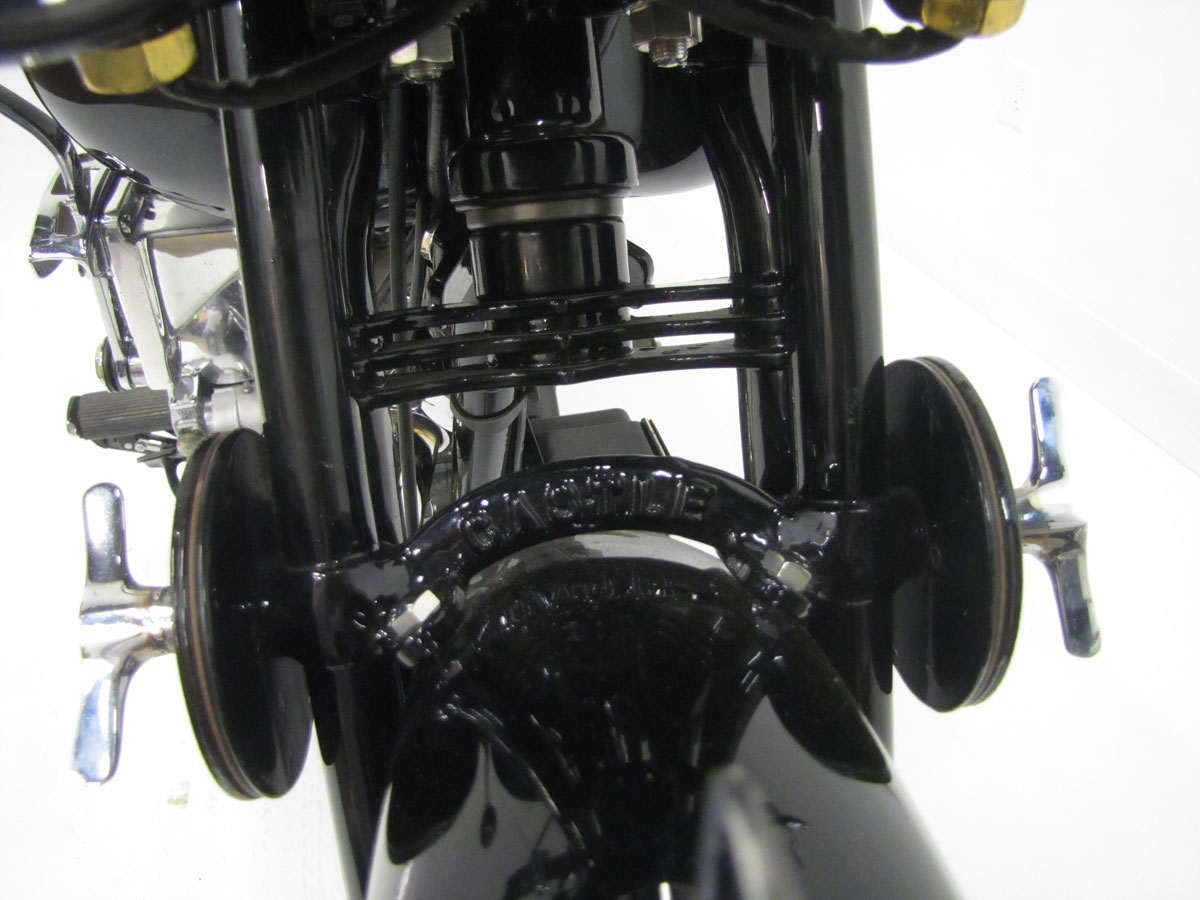
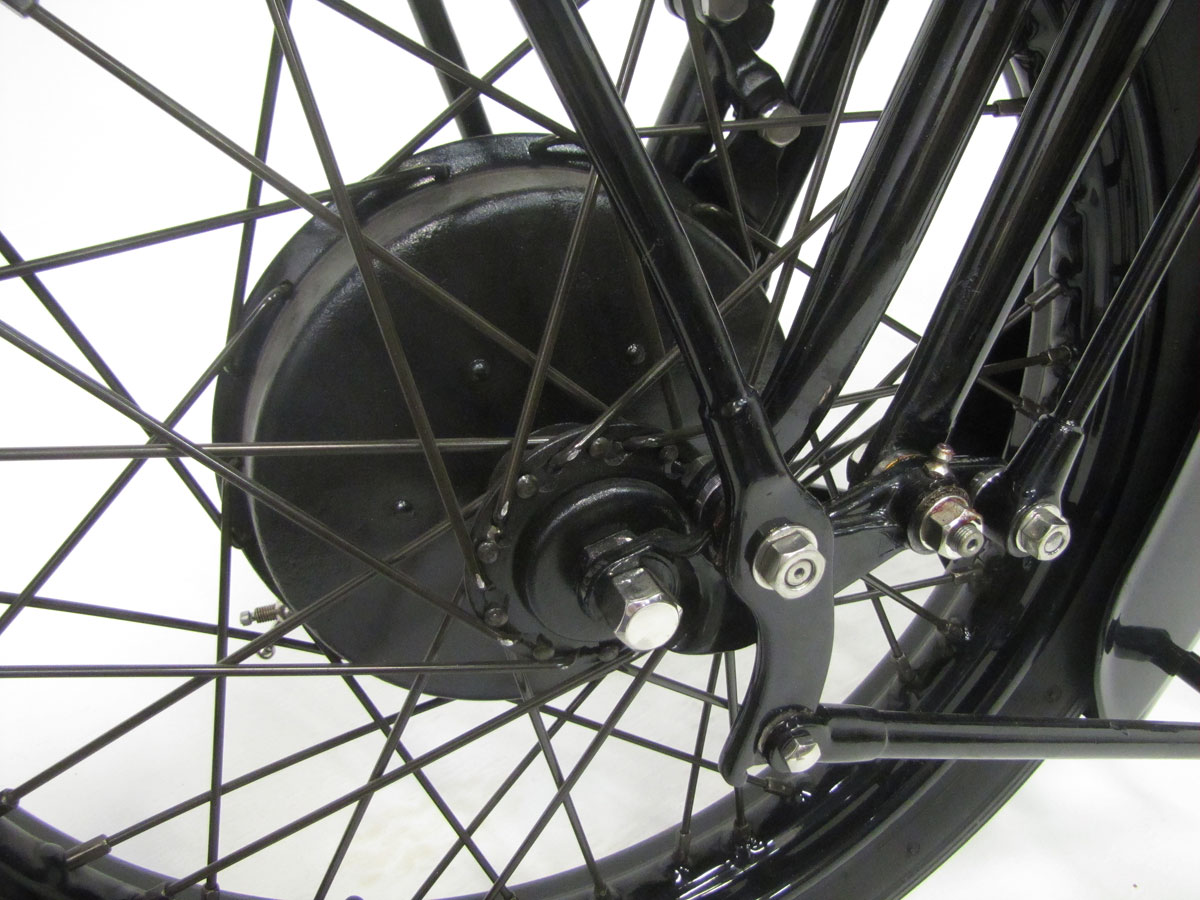
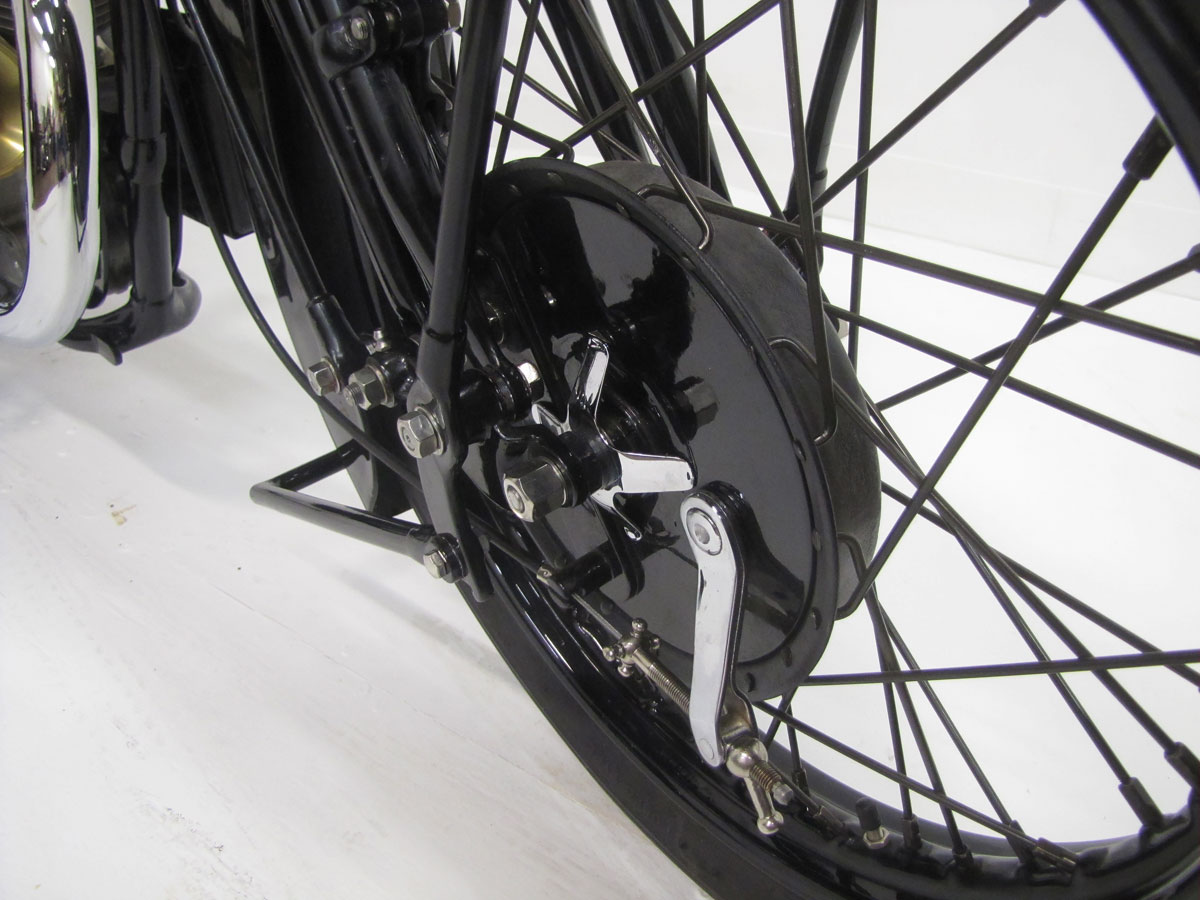
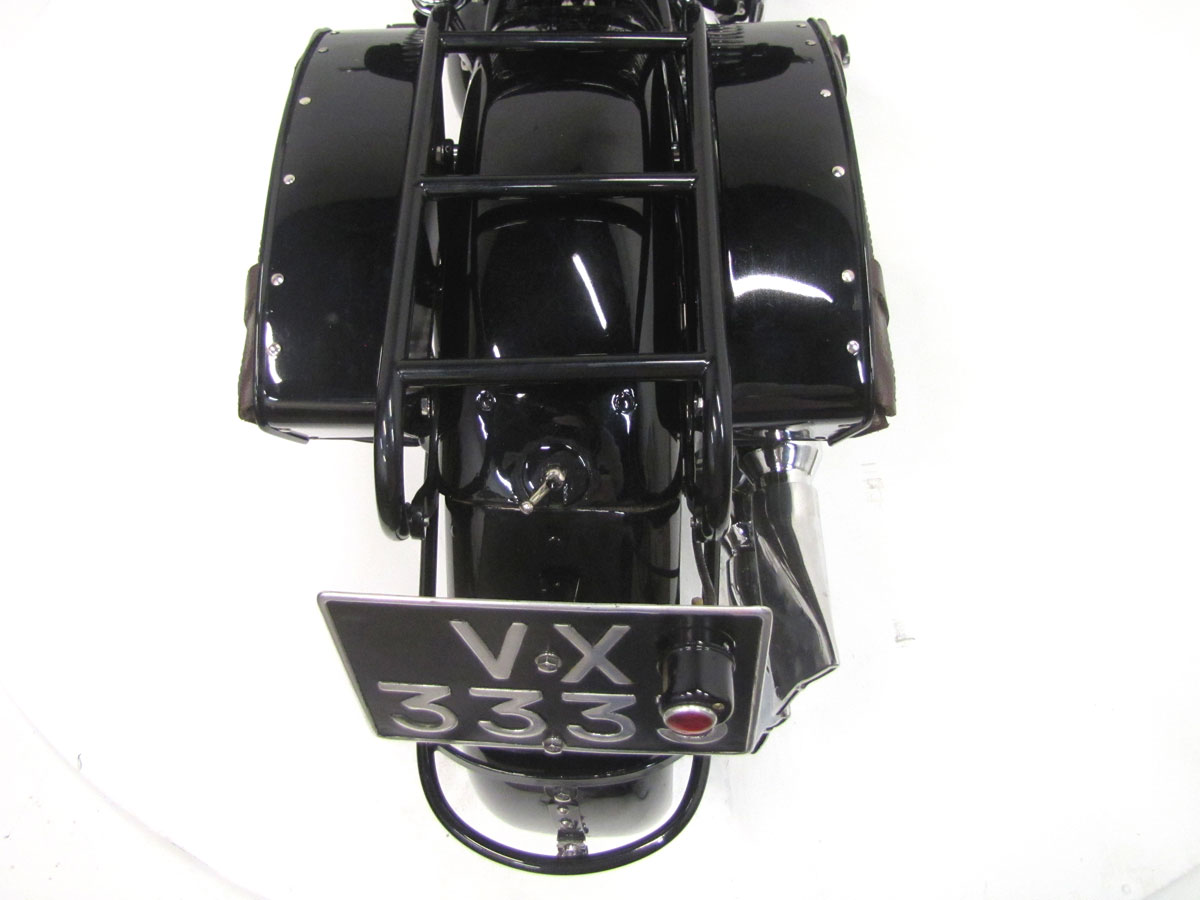
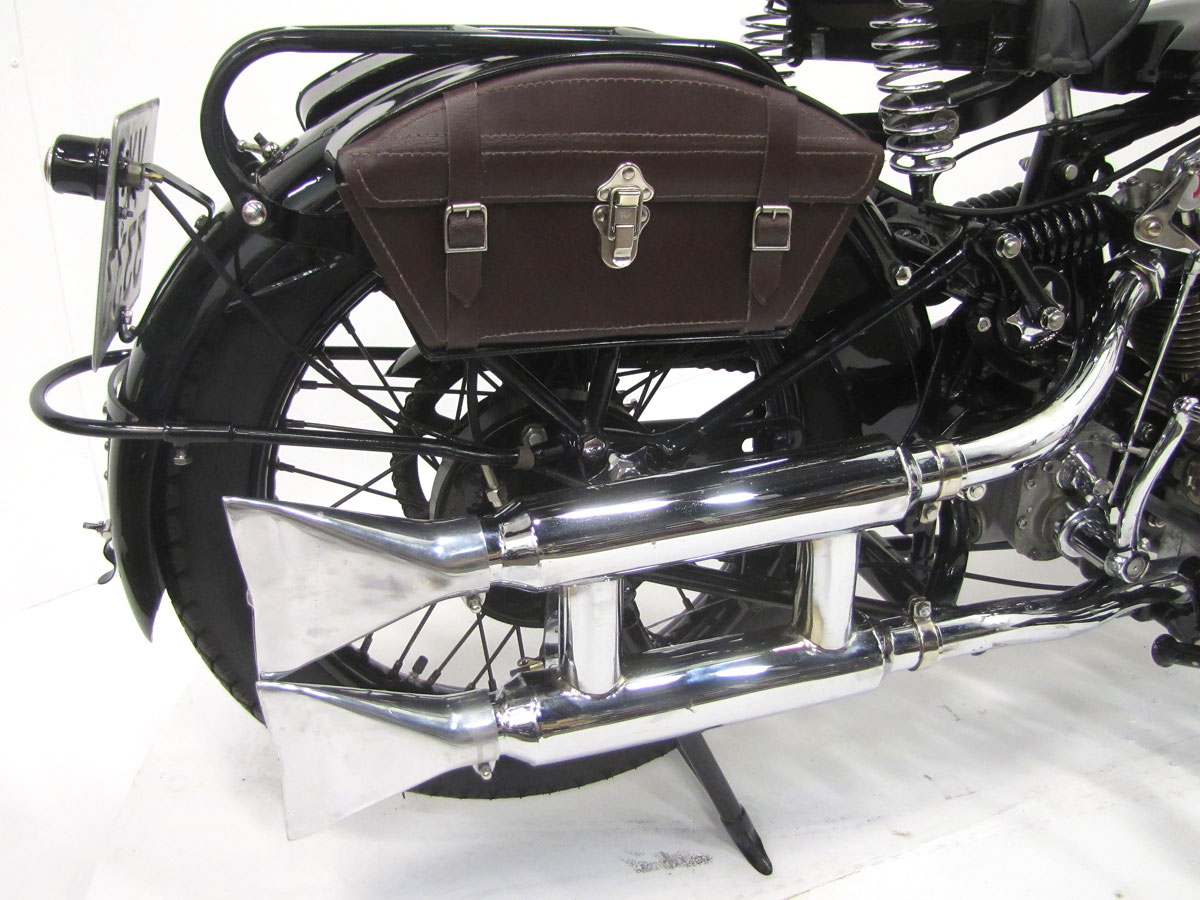
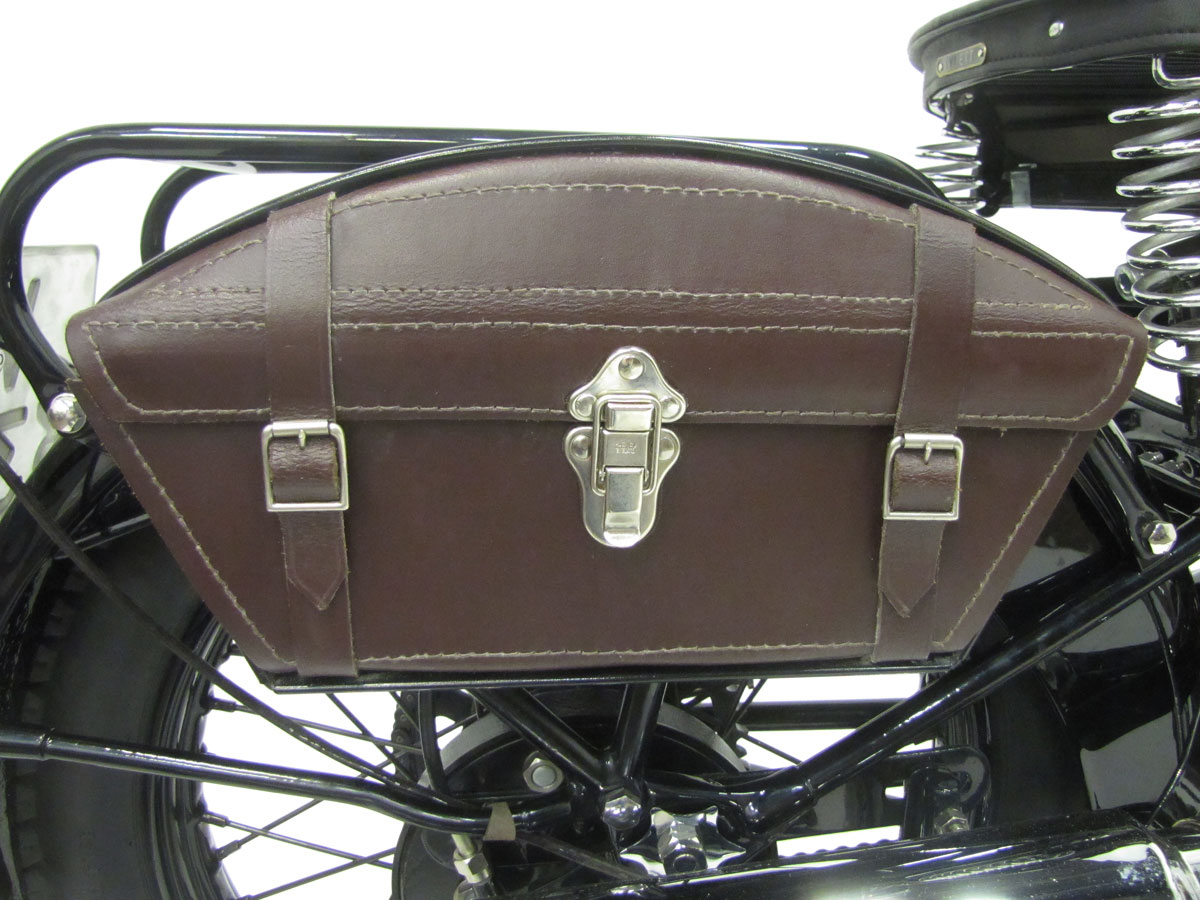
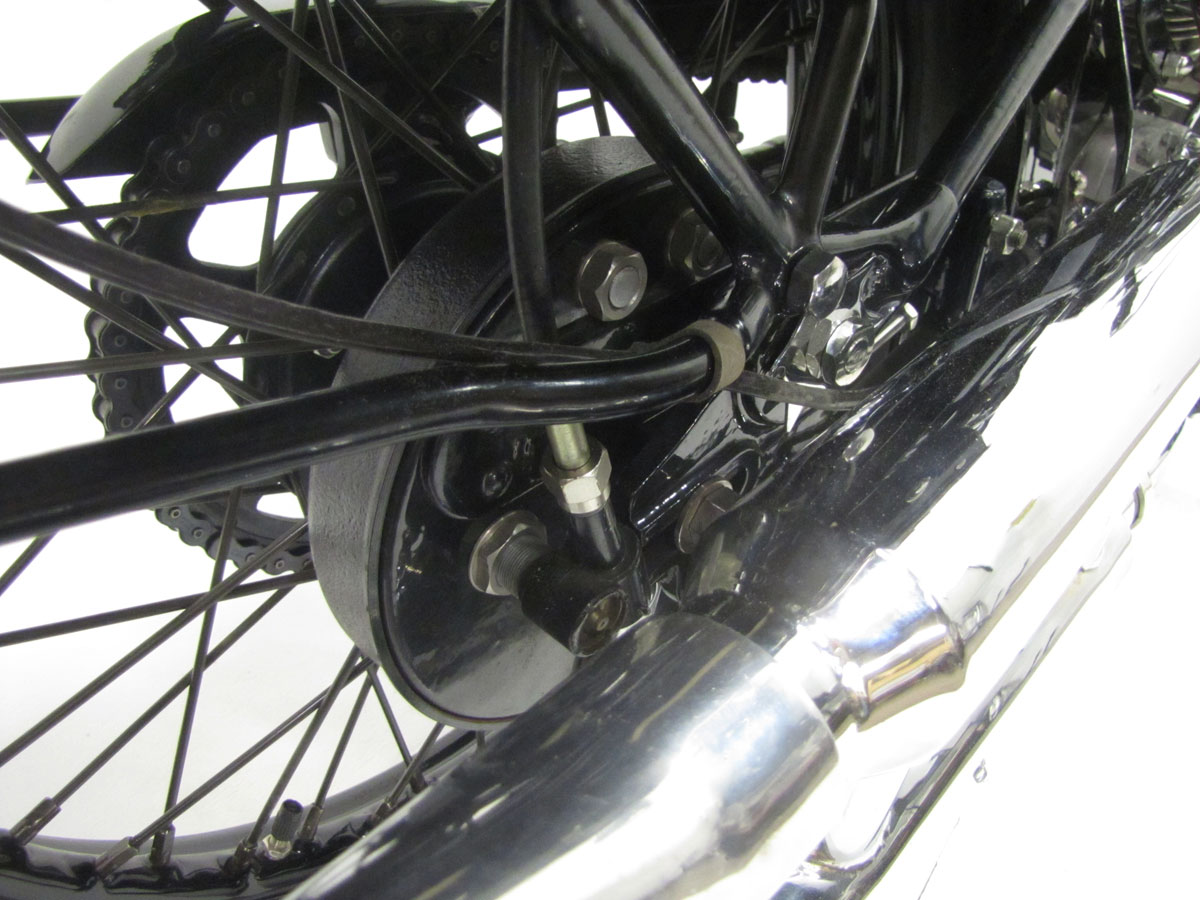
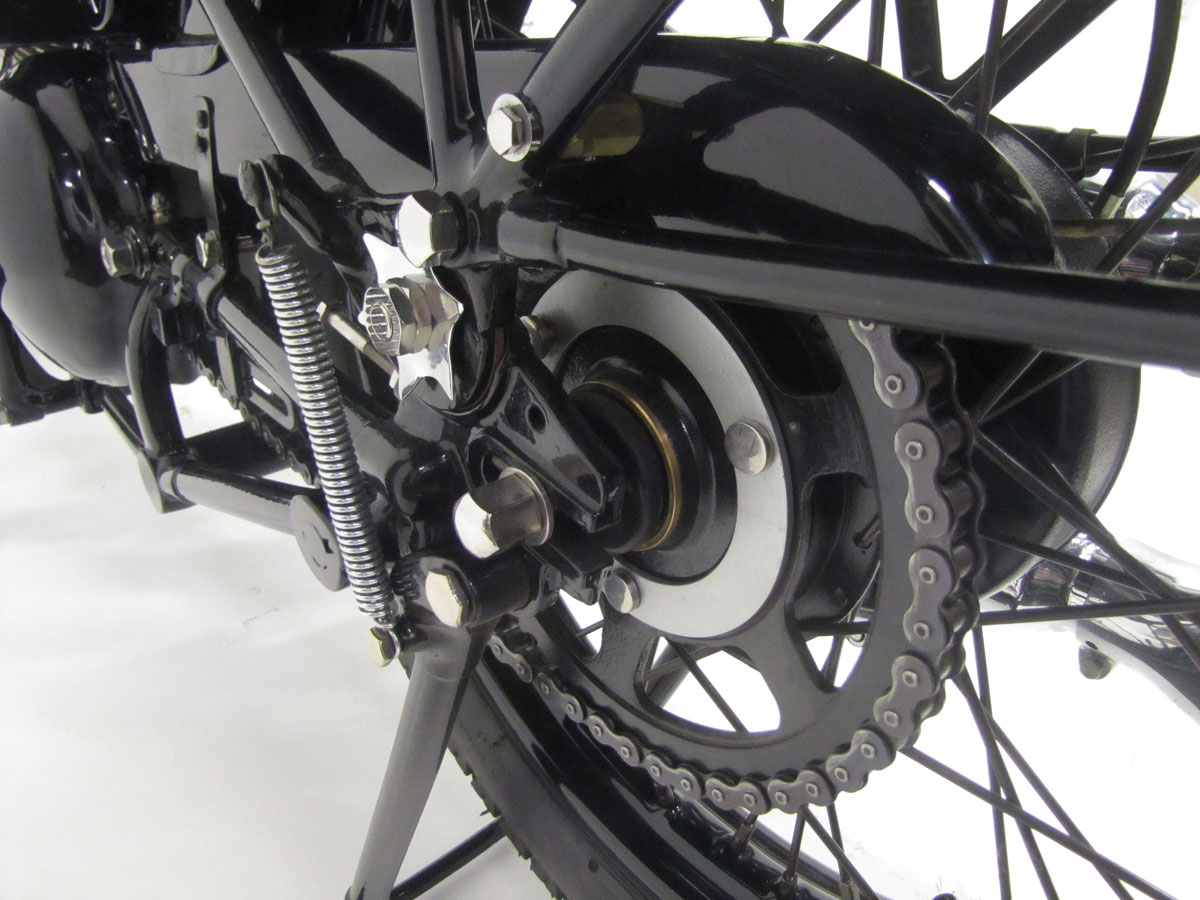
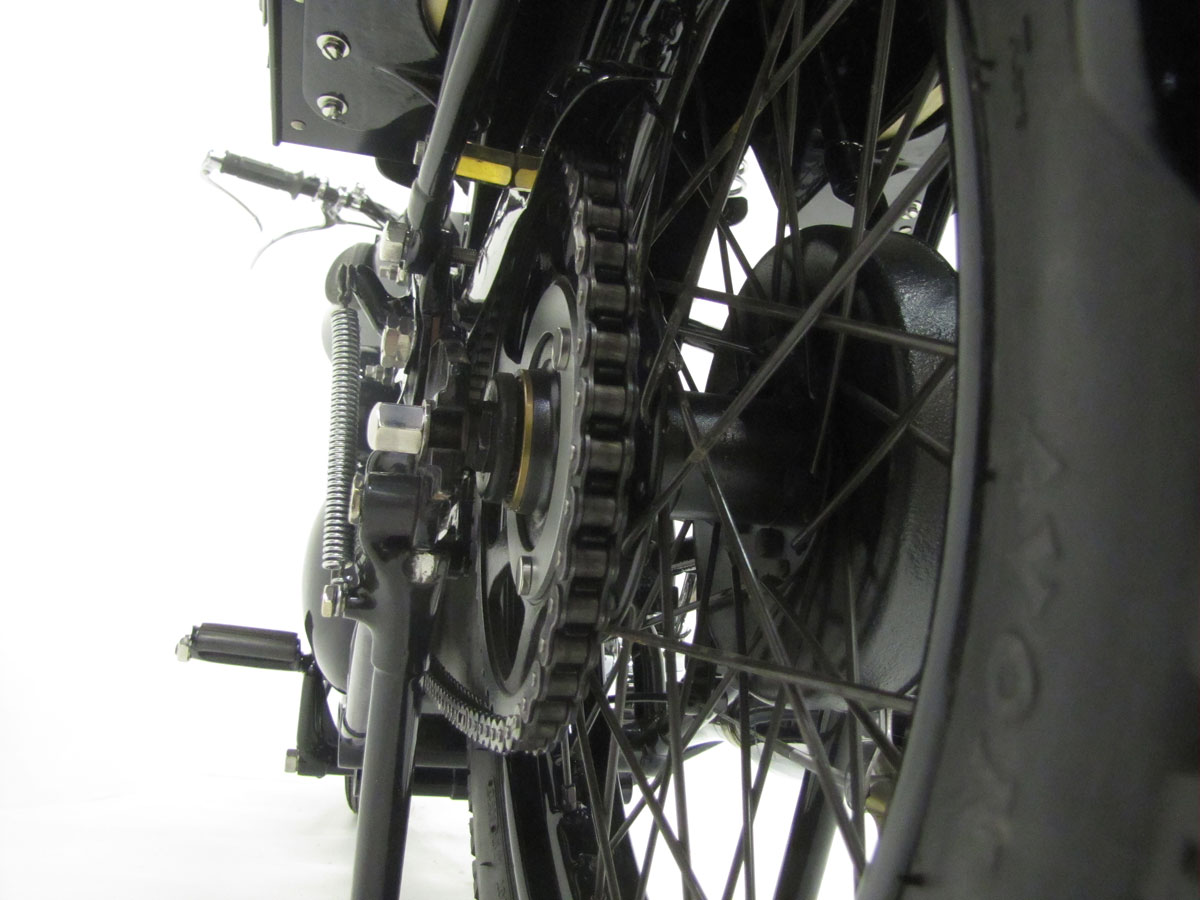
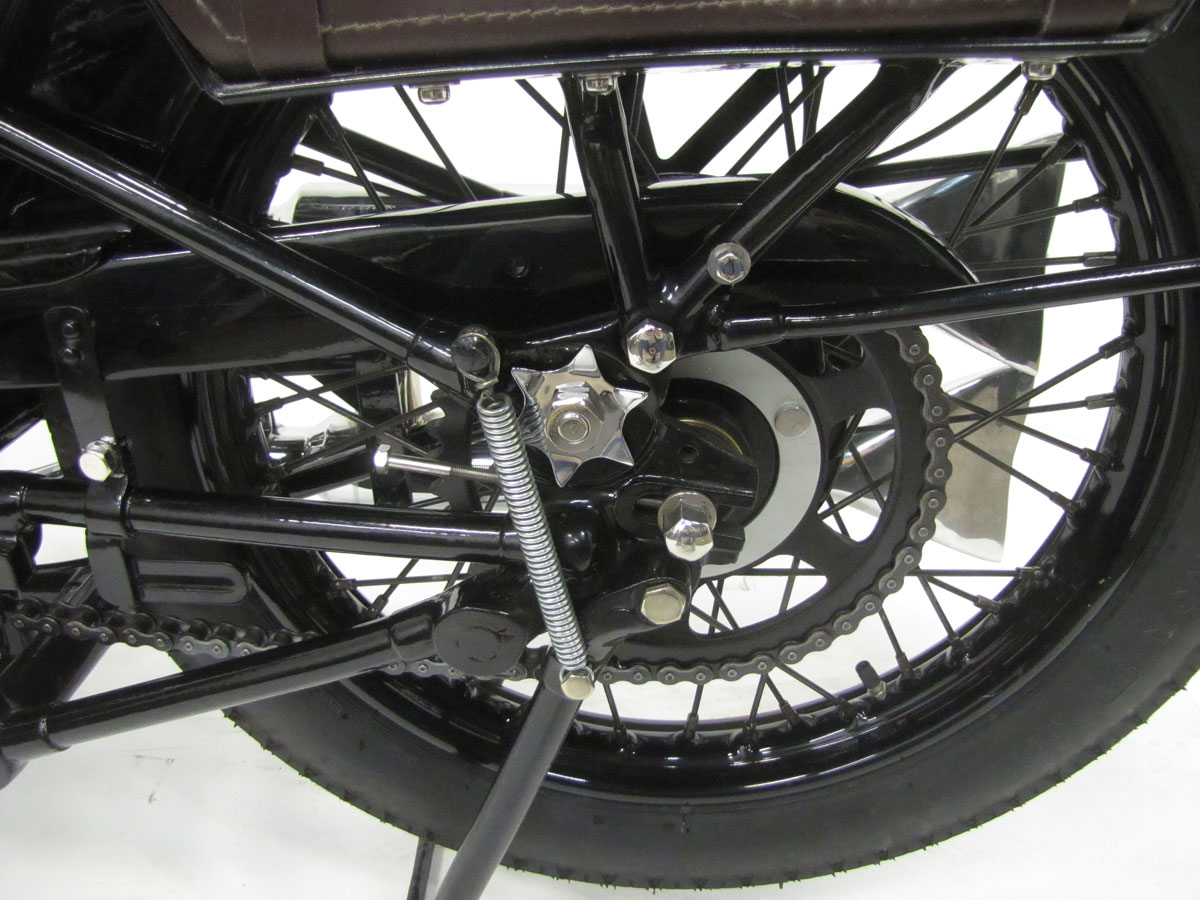
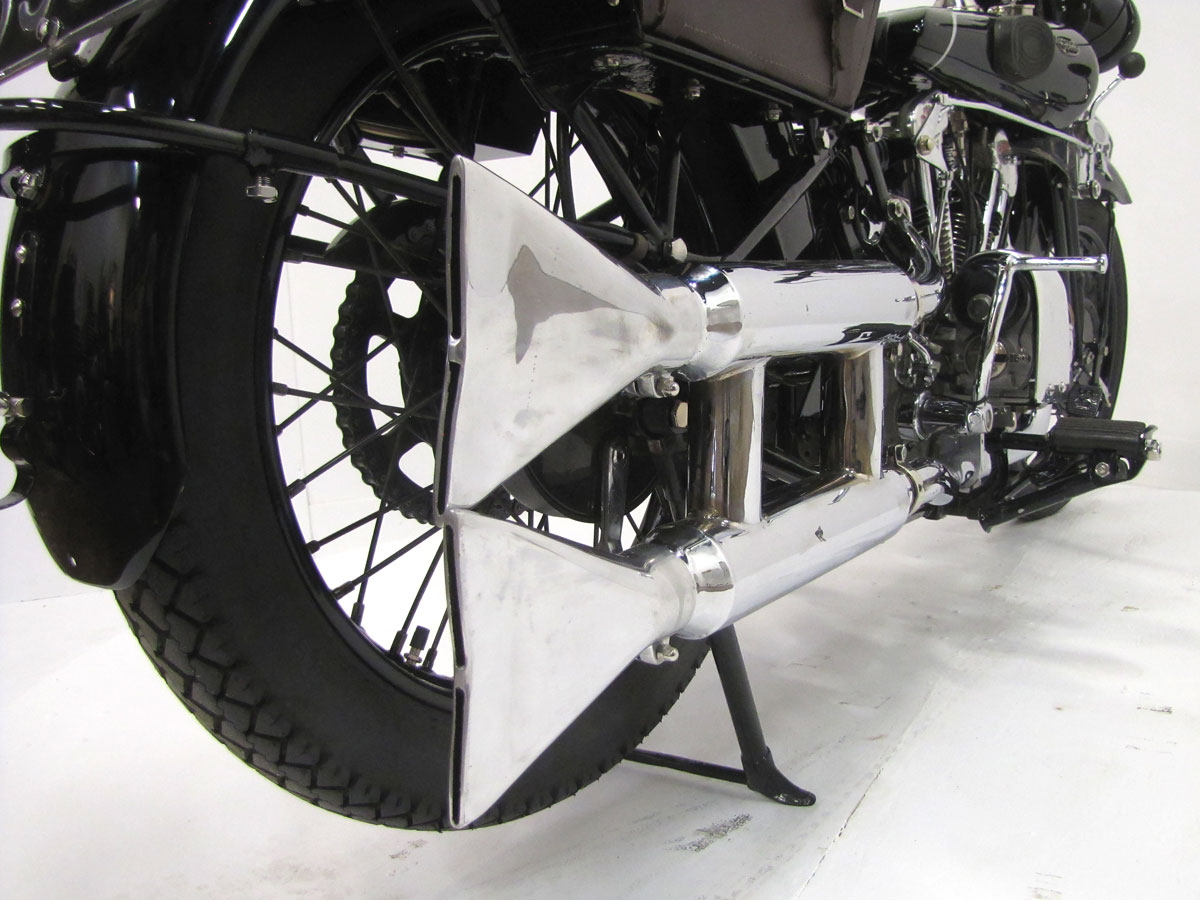
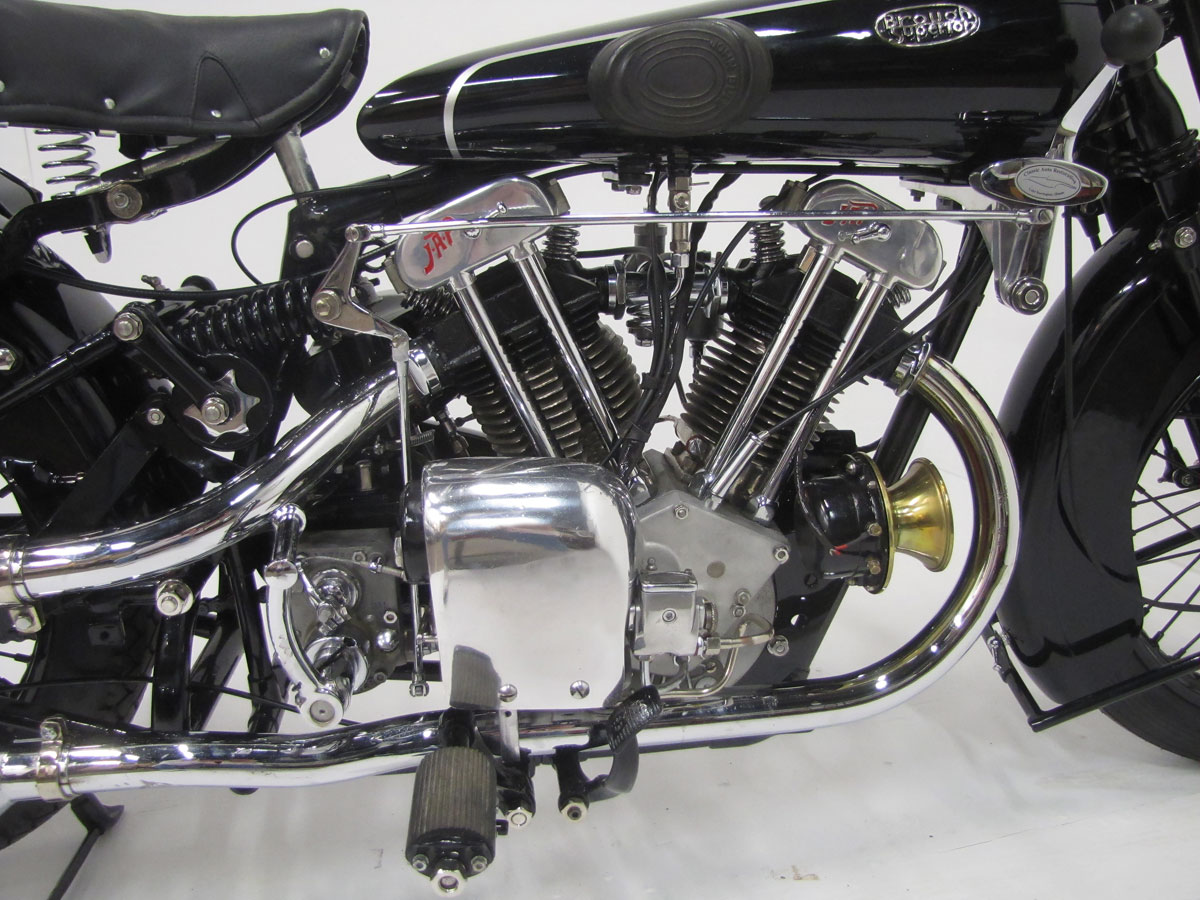
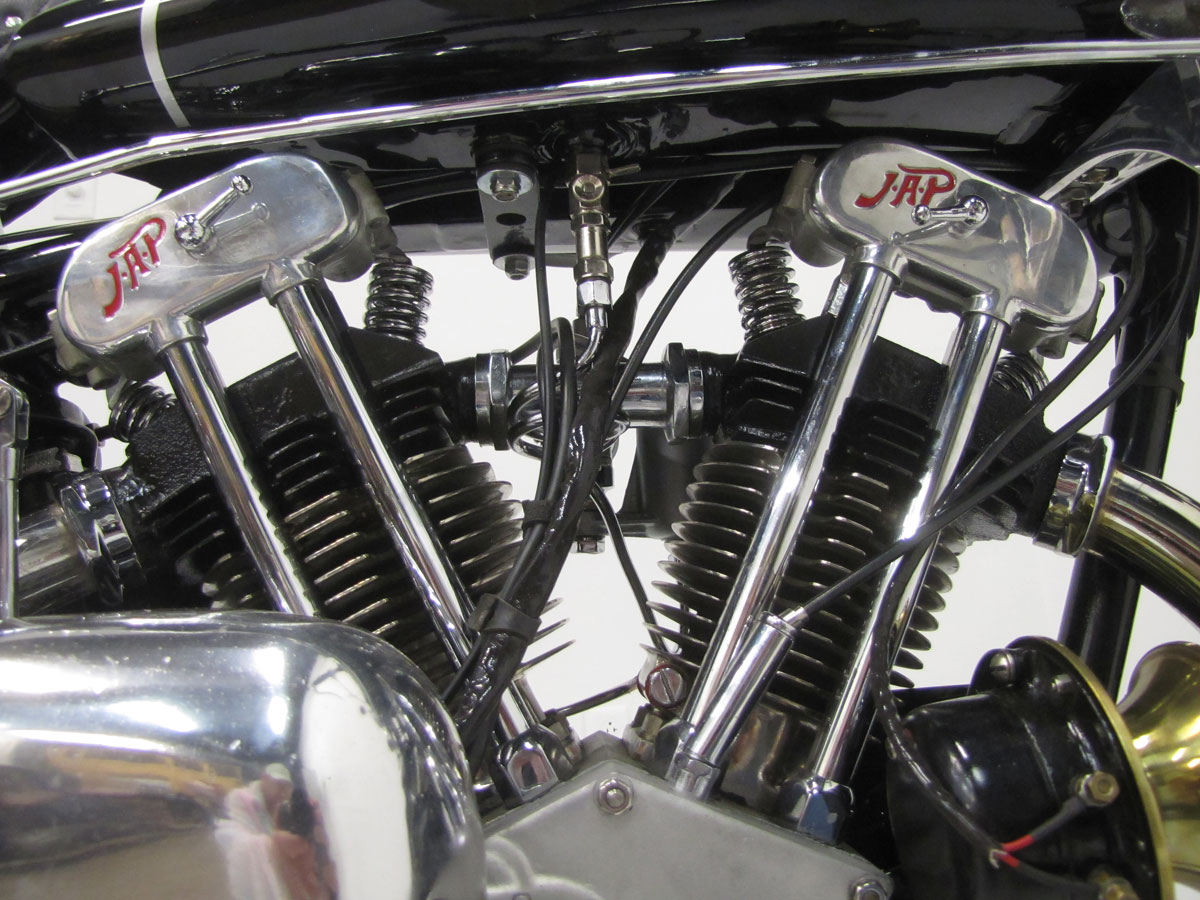
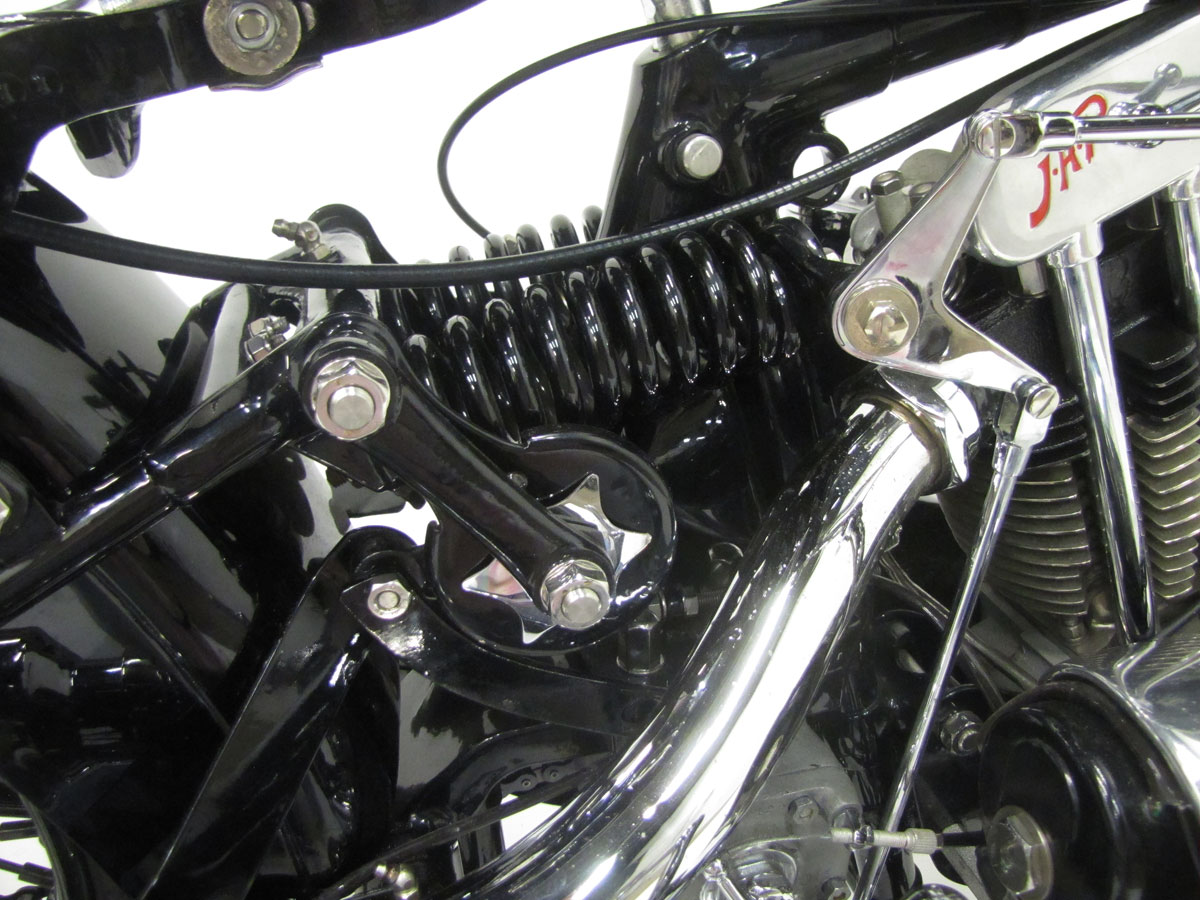
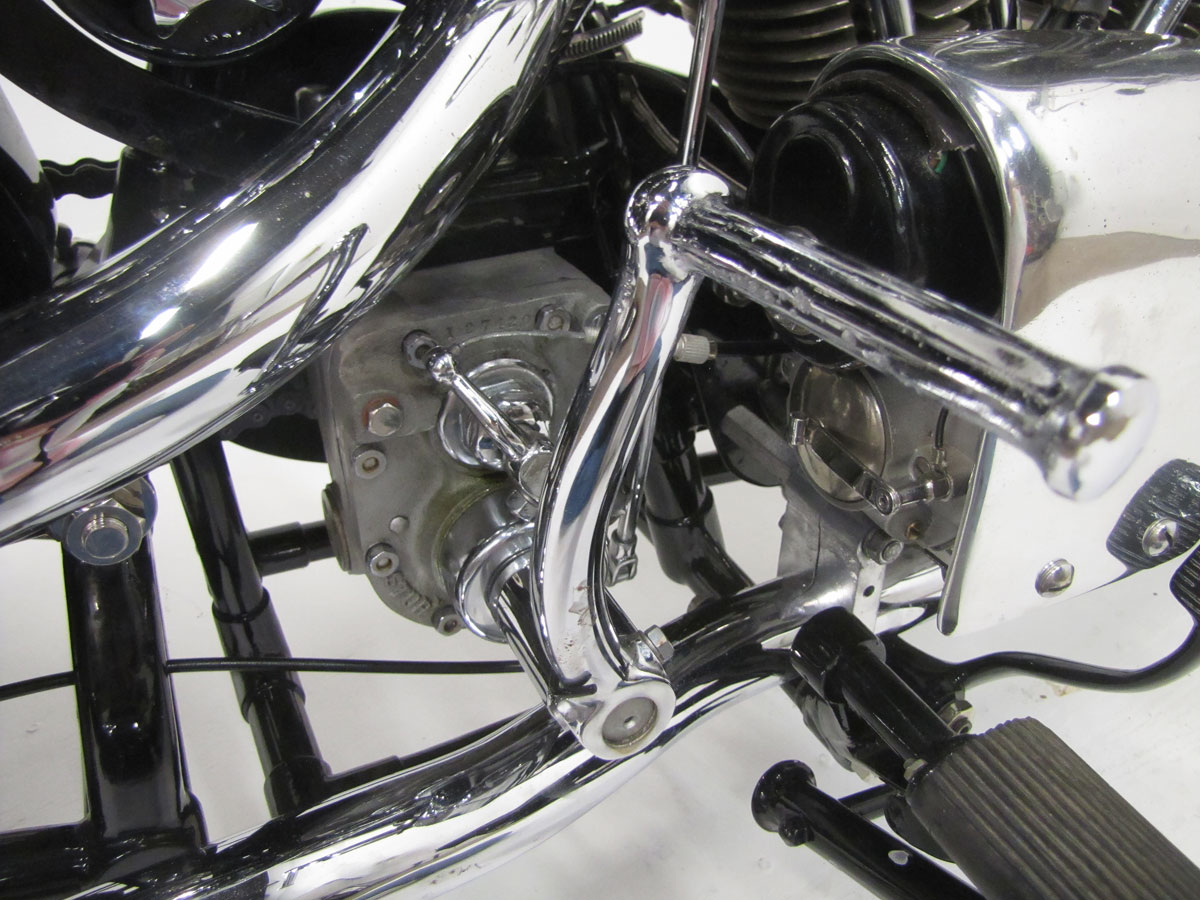
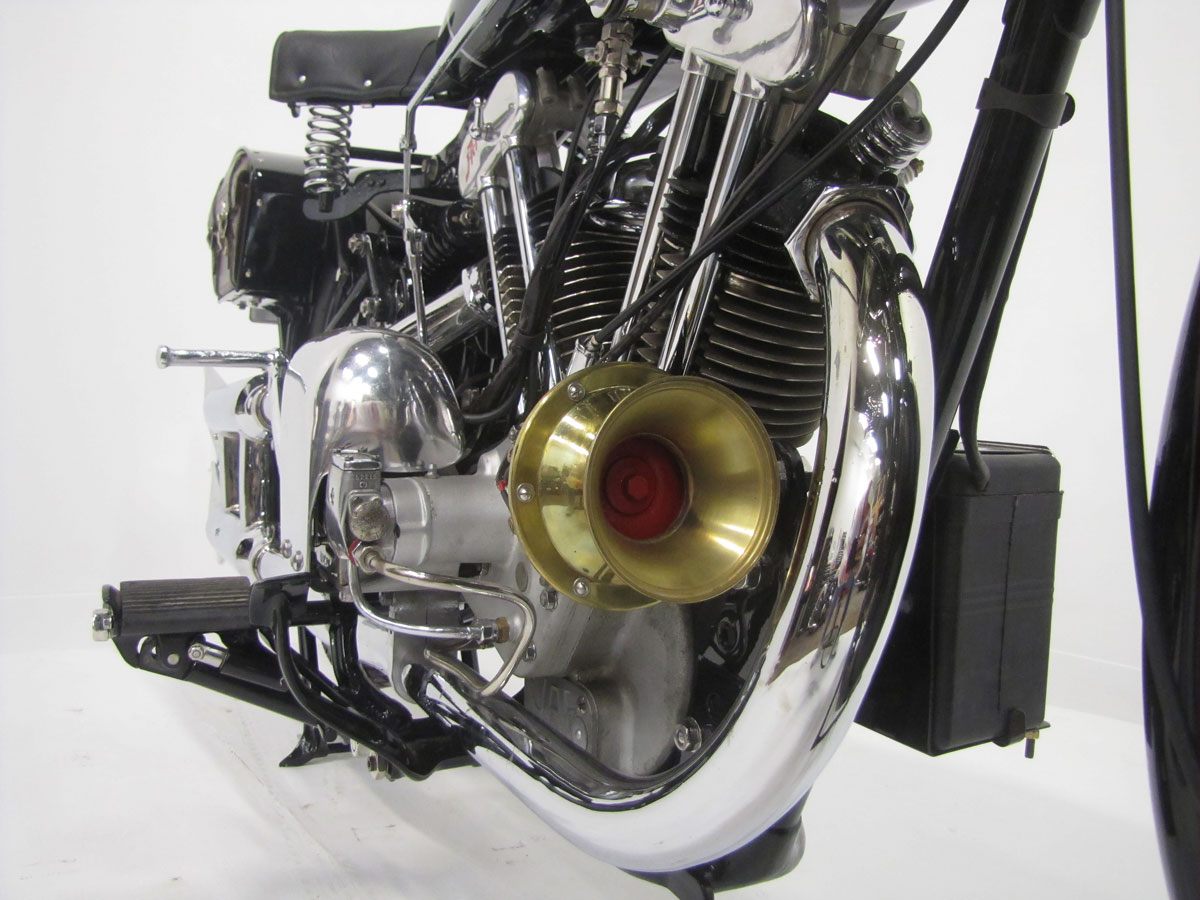
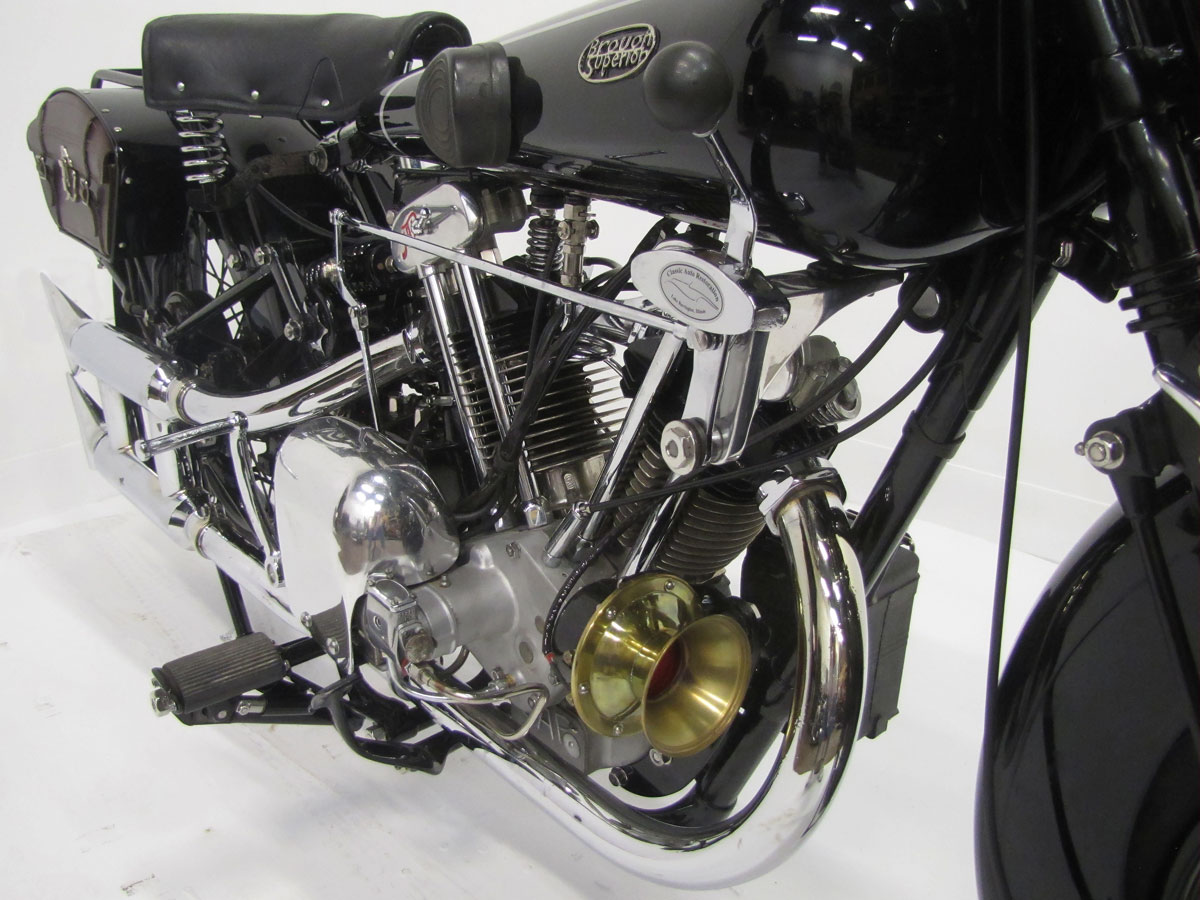
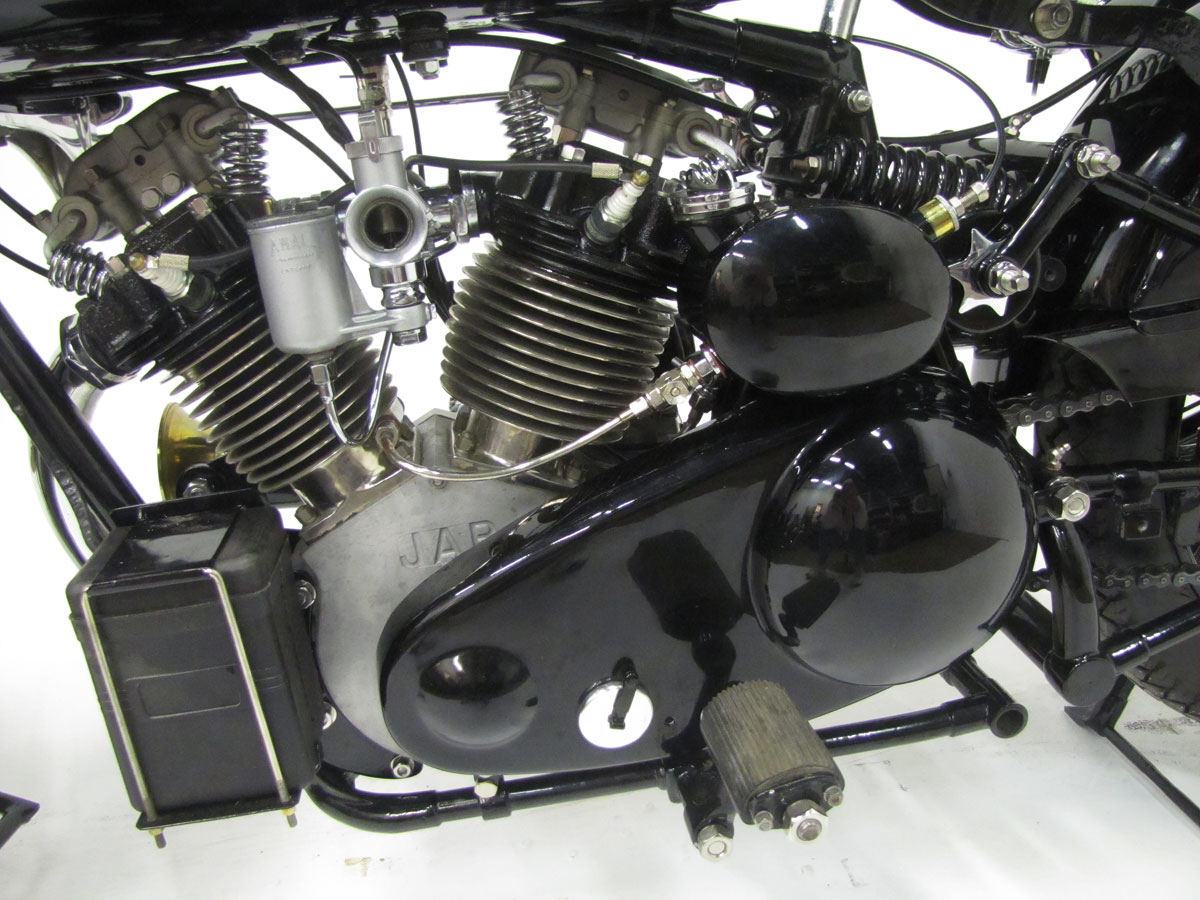

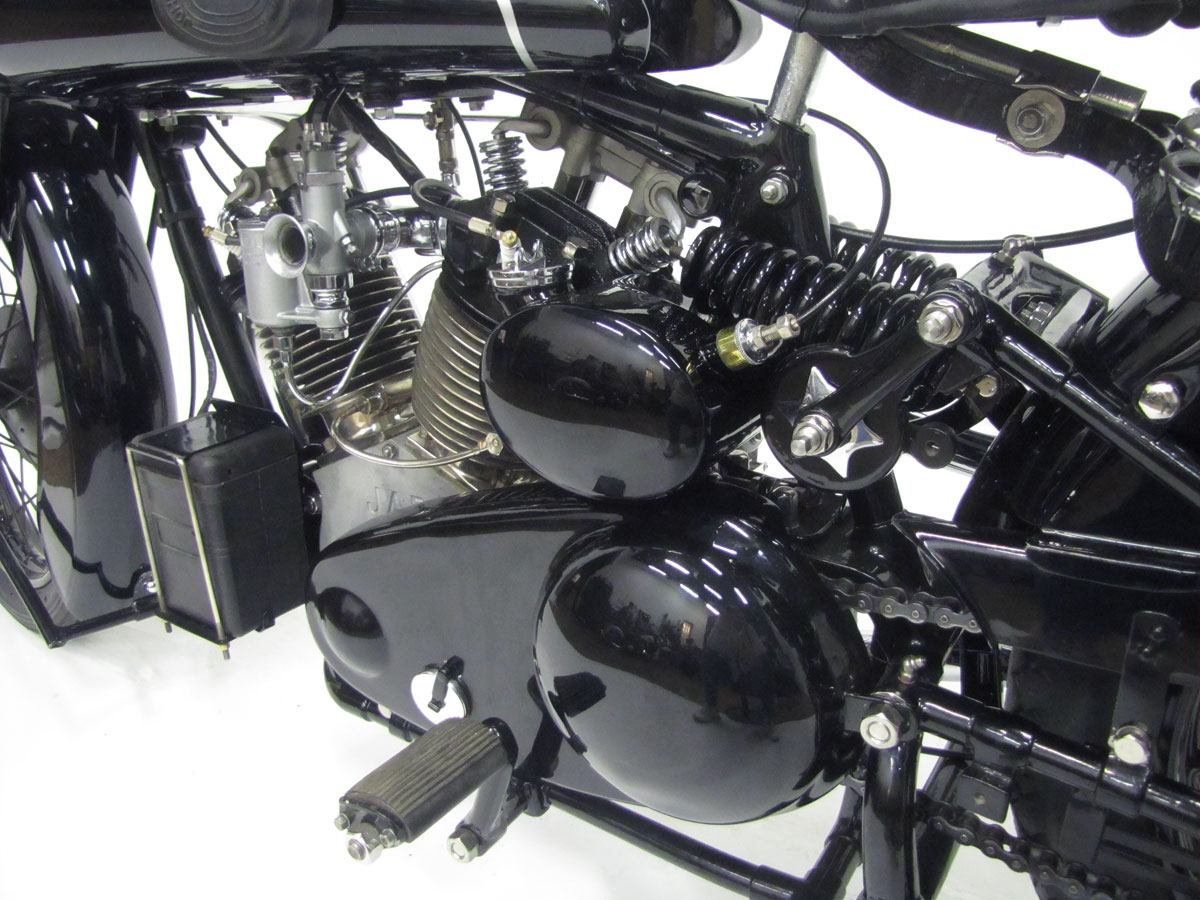
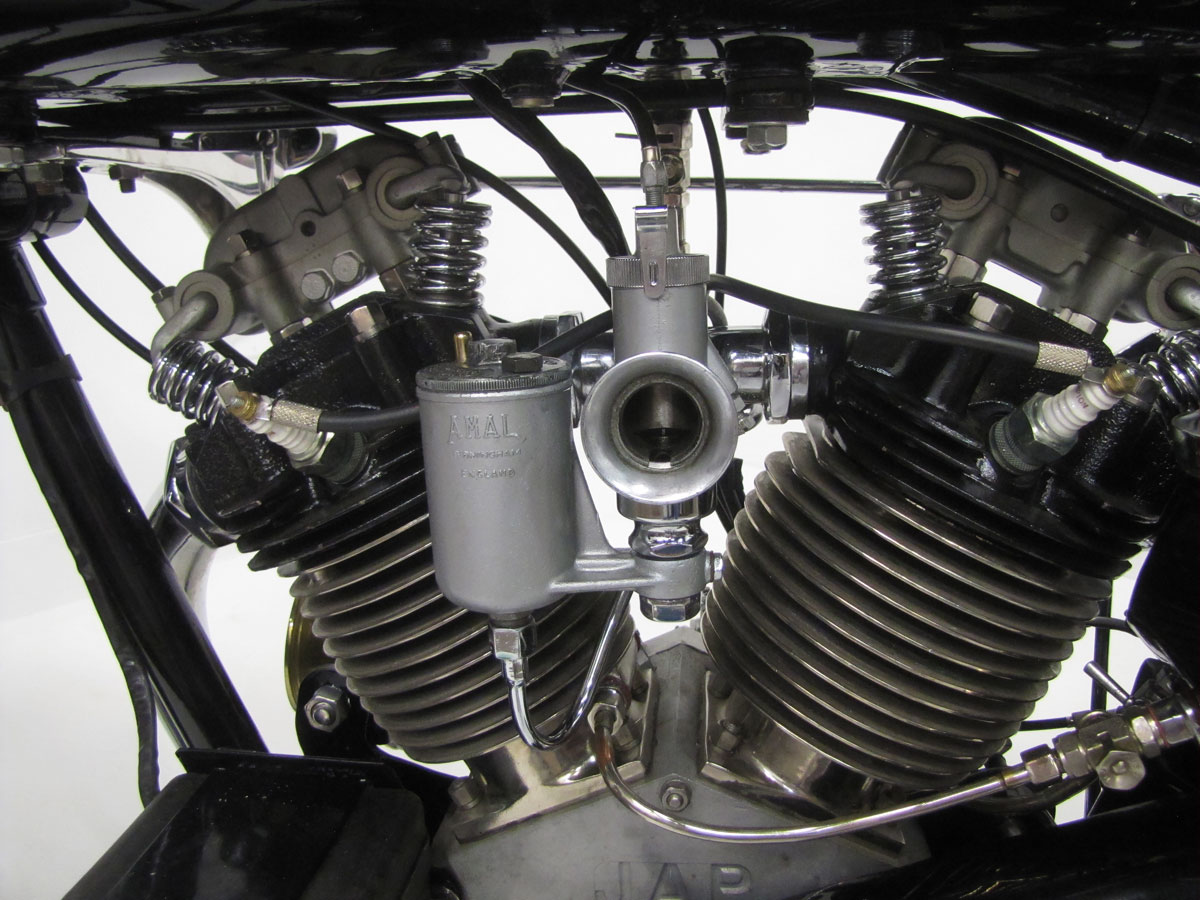


Thanks to Don Rosene for sharing his beautifully restored Brough Superior and the other bikes from his collection through the Museum. It must be difficult not to be able to see them everyday, but for those of us who will rarely have the opportunity to see, let alone own or ride such classic bikes, thanks for sharing your collection!
This Brough is so clean and detailed, I couldn’t find any dust on it! Such a beautiful bike. Oh, to have the money and time to do a masterpiece build like this.This is an incredible build.
This brought superior appears with chrome and perhaps aluminum highly polished and perfect paint leaves one to wonder if they looked this good leaving the factory? they were true diamonds of there era. It must have been difficult to restore without parts. What a glowing moment it would be to see one on the road!
Thanks for you positive comments, Ed, Kenneth and Robert.
I did get a private message earlier today correcting my description of the rear suspension. It stated the rear suspension is a “cantilever” design using two spring units and a friction damper.
Did William Harley draw inspiration from those cylinder heads for the 1936 EL?
There are restorations and there are legacy projects. You can feel how exciting this motorcycle would have been for its owner the day it was delivered. A spring trip to the museum can’t come soon enough.
Thanks for all the positive comments. It was mentioned that it must have been difficult to do this restoration owing to the scarcity of parts. While this is true, it doesn’t address the fact that parts that are available are often very poor reproductions, and unusable. I did in fact have to fabricate the front fender. I’m pleased with the result. But probably the most daunting task was in dealing with the threaded fasteners. The usual comment I received on the subject was “Oh yes, those are Whitworth threads.” That is a monumental understatement! Yes, there are a few Whitworth threads, which is a very early standard that had mostly been phased out by the time this machine was built. This includes oversized hex heads, extra coarse threads with 55 degree thread profile, and was used sparingly on this machine, with some of the frame lugs threaded with this system. Also used was BSF (British Standard Fine), British Cycle Thread, A fine thread of 26 threads per inch all the way from 3/16” to well over 1” diameter. Also found are BA (British Association) threads used on smaller sizes, similar to our own 8-32, 10-24, etc. The replacement fasteners were hand turned on a lathe from stainless steel. Most of the bolt heads were domed for appearance and originality, and all were polished to a chrome-like shine.
After completing the restoration, I Rode the machine several times, and am amazed at how well it performs. It is easy to kick start, never smokes, even on initial startup. The clutch does not drag or slip, the steering is precise and crisp, and the brakes are quite effective. The hand shift operates through a gate that is properly spaced, and selects the desired gear with minimal effort. Even neutral is easily found. The 3 speed Sturmey Archer gearbox has wide ratios, that perfectly suit the torque characteristics of the JAP engine. Once on the highway and into top gear, the machine settles into a nice leisurely lope, seemingly eager to gobble up long distances. The exhaust note is pure joy, with just enough bark from the fishtail exhaust tips under load to show off the V-twin burble, yet not harsh at cruising speed.
When one considers that this machine was built at the same time as the Model A Ford, it emphasizes just how far advanced these Brough Superior machines were!
Everytime I look at the pictures of my Brough (and I do look often) I appreciate the beautiful job John Young has done in finishing the restoration.